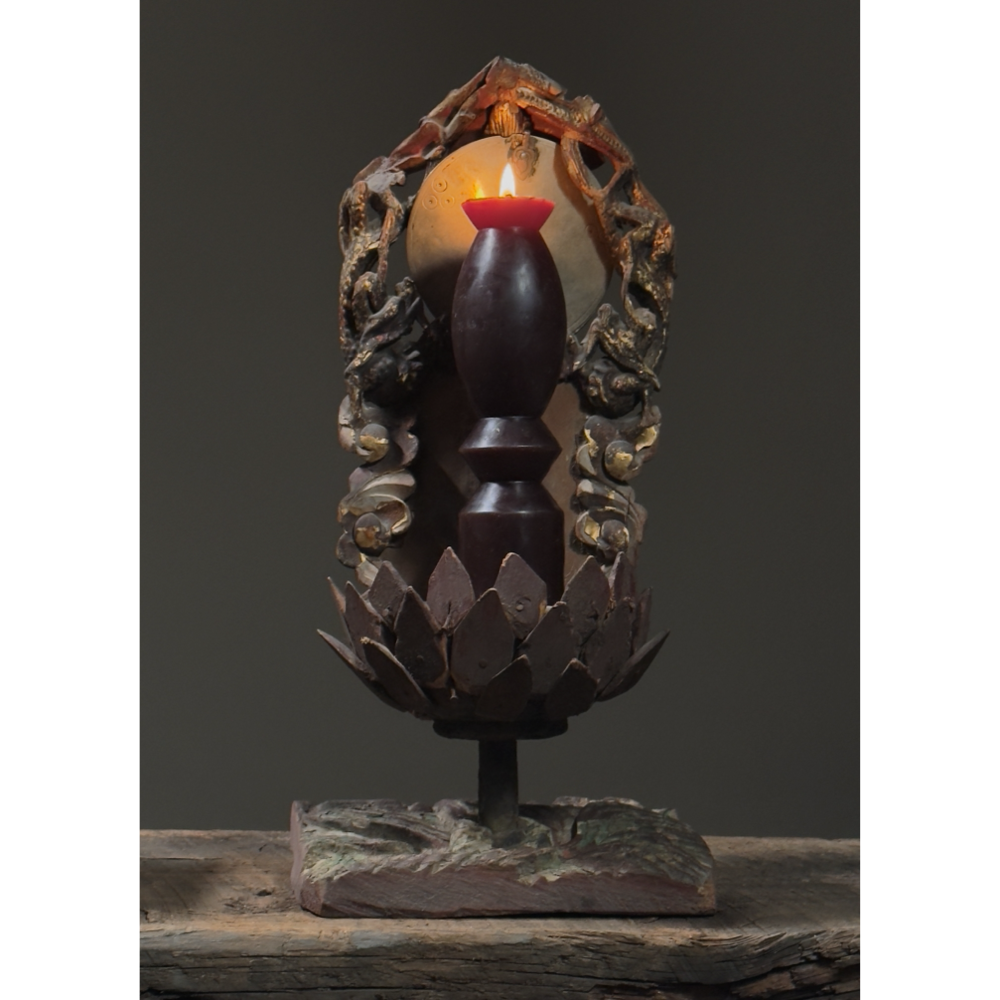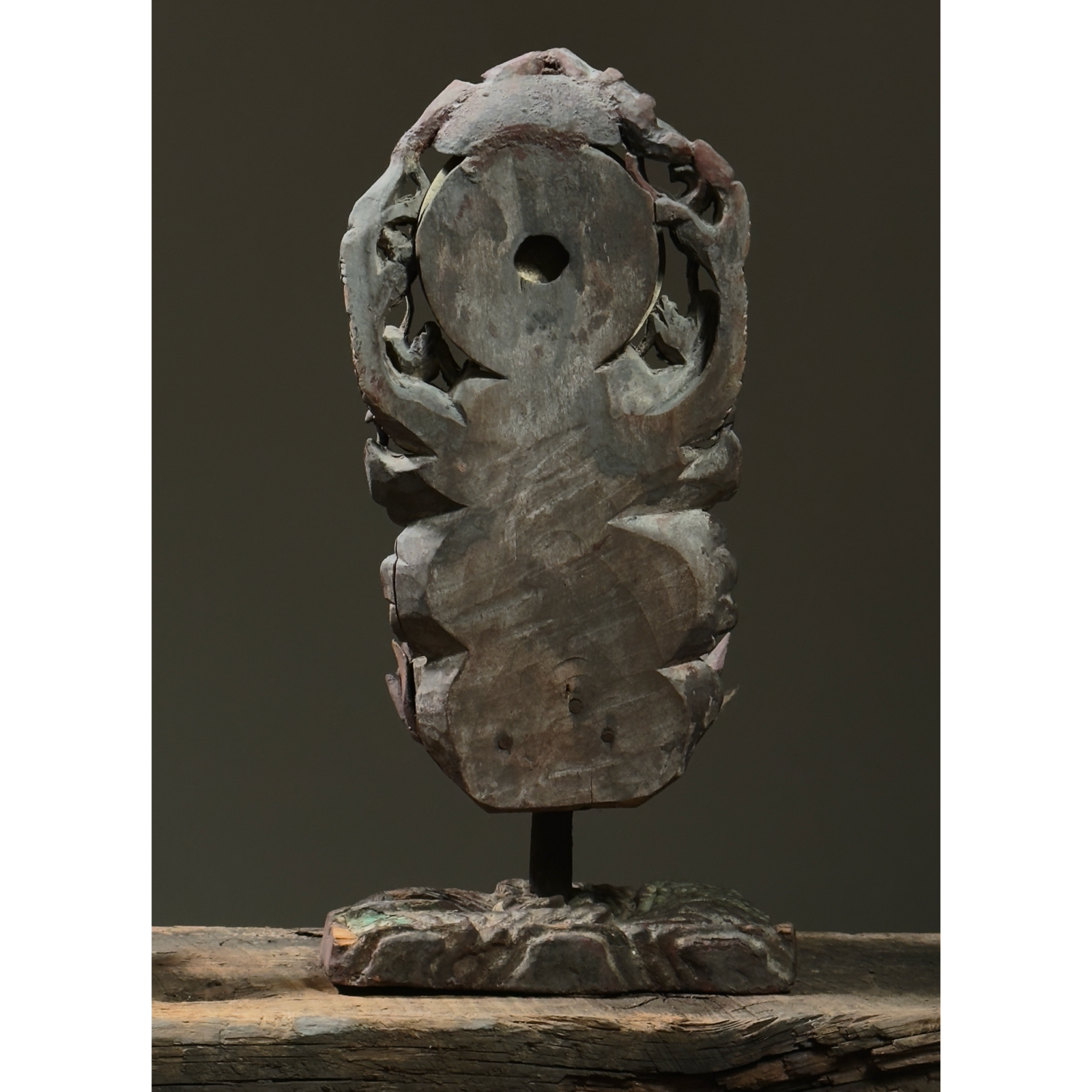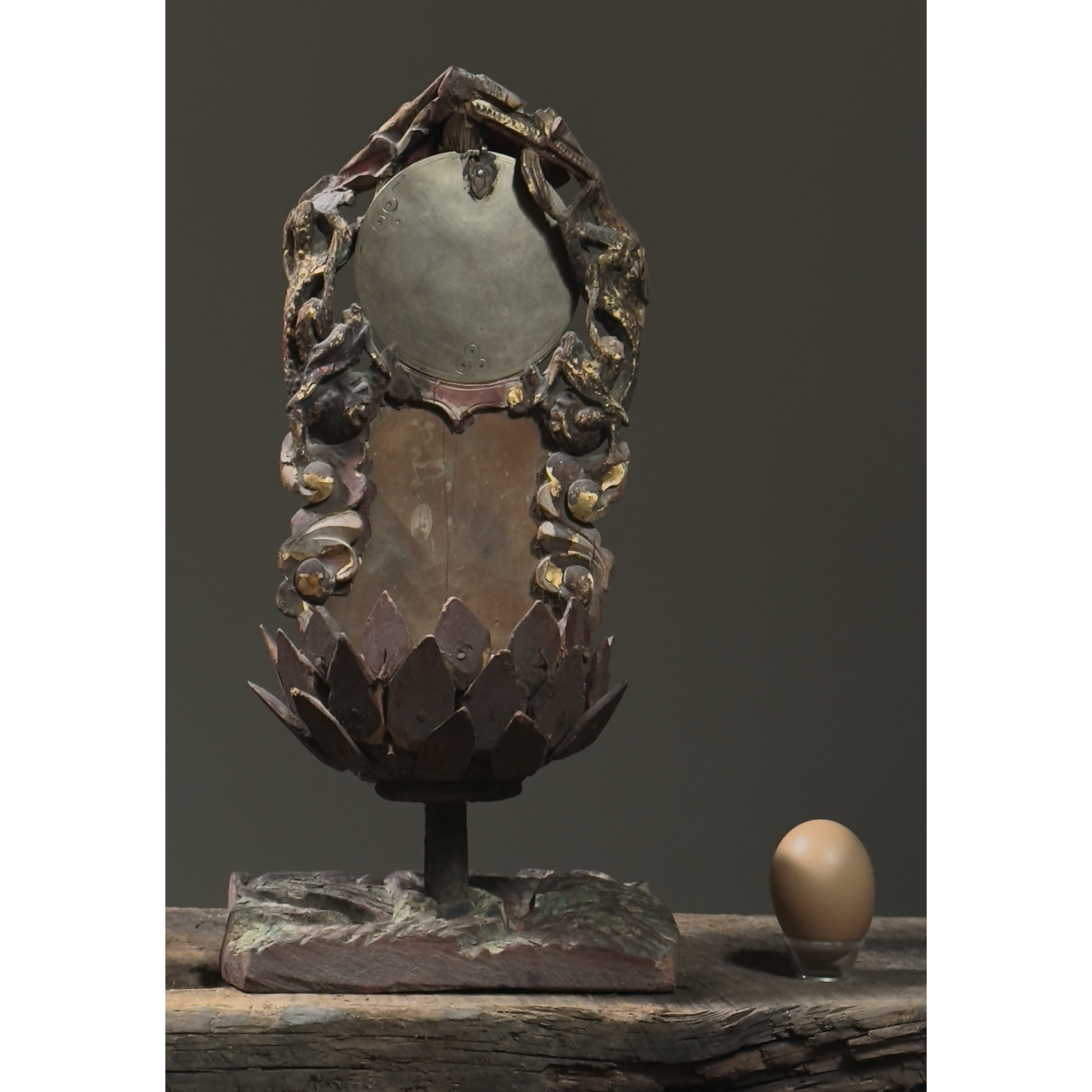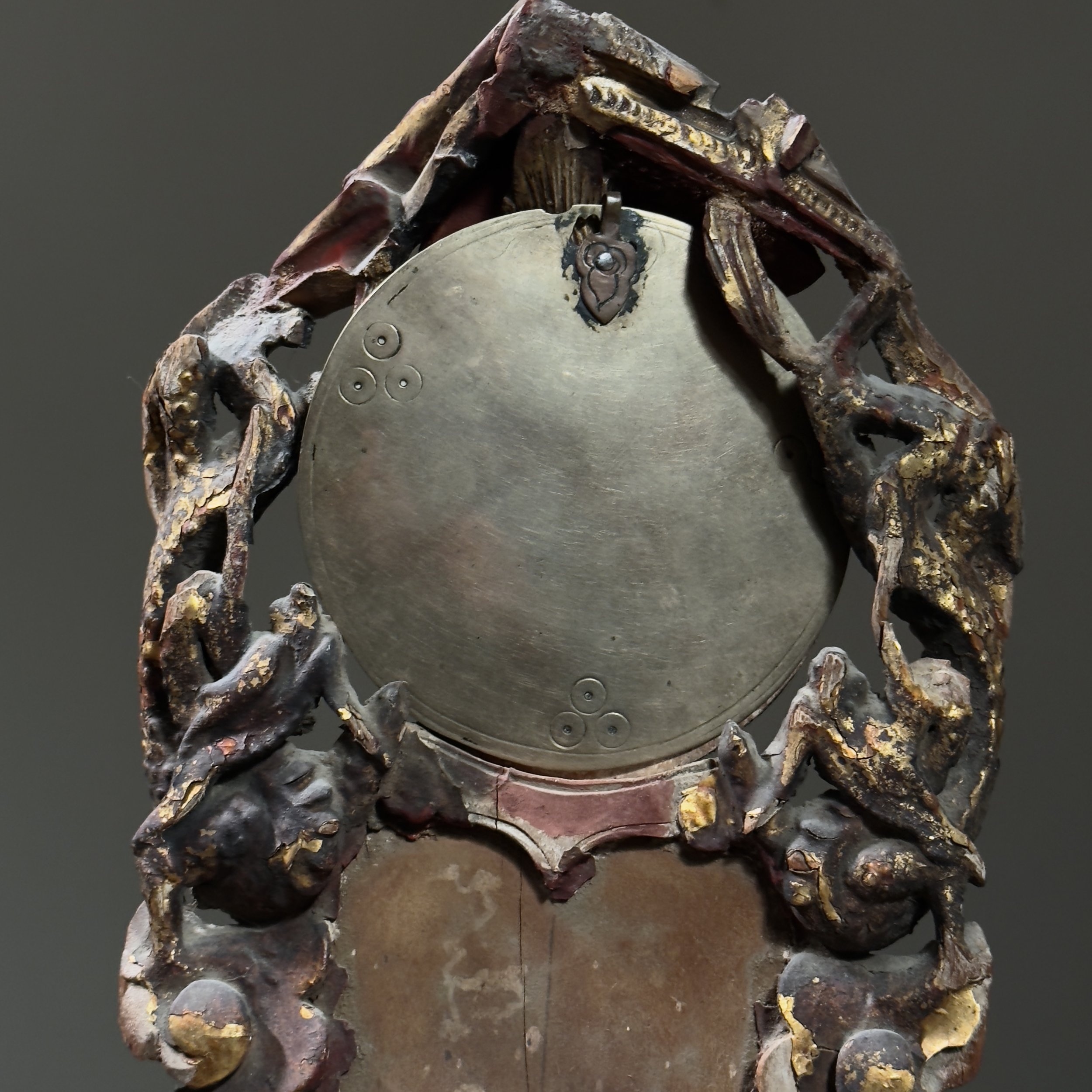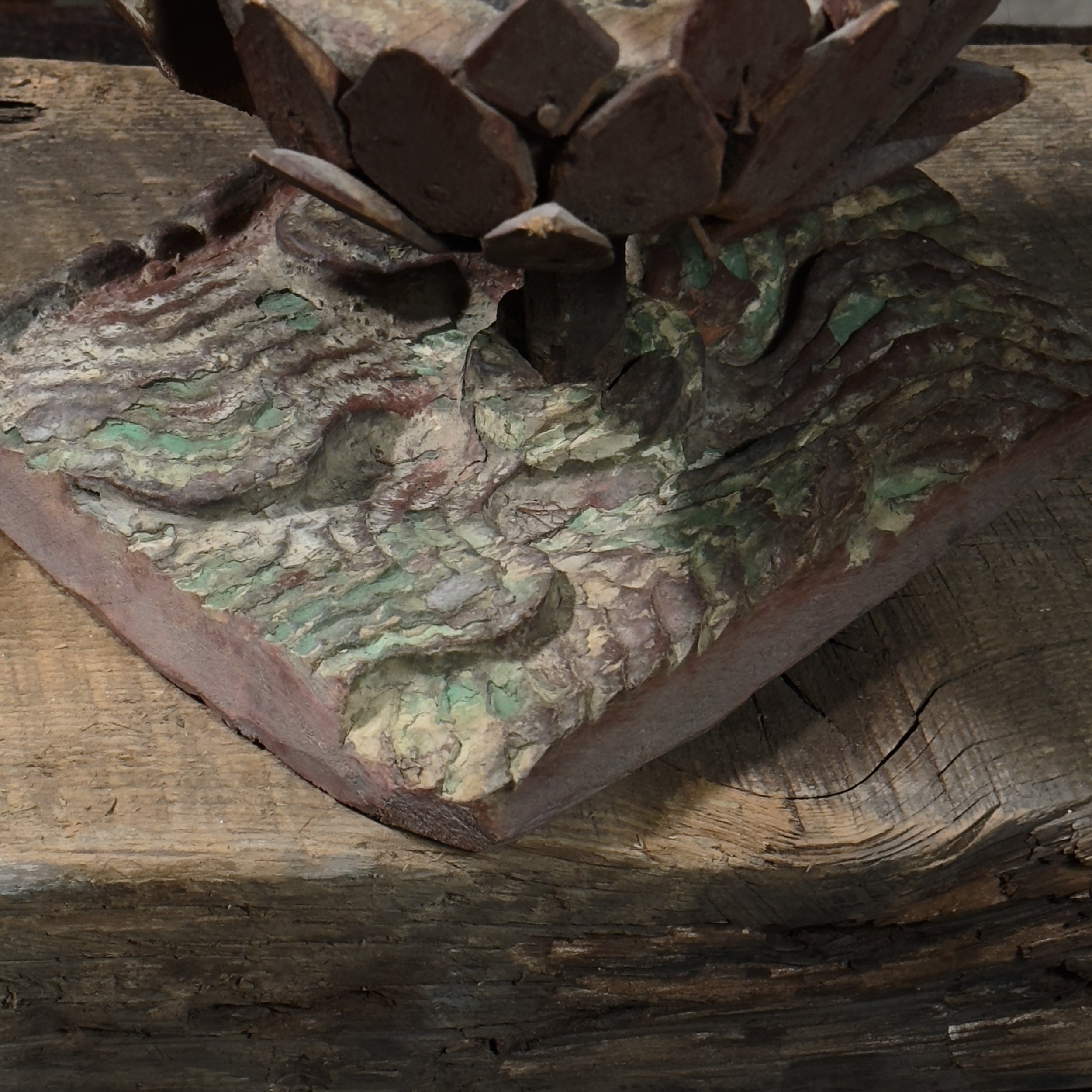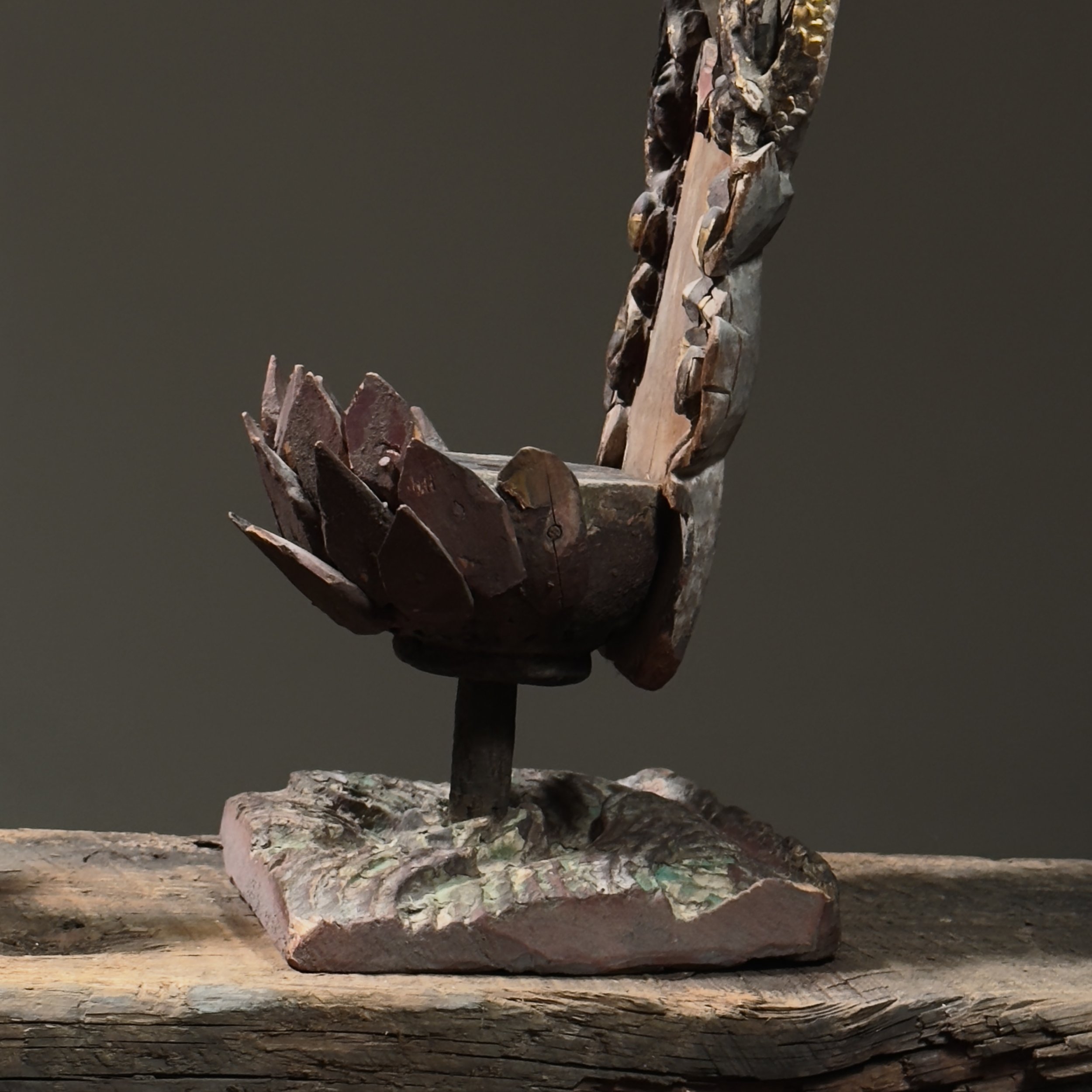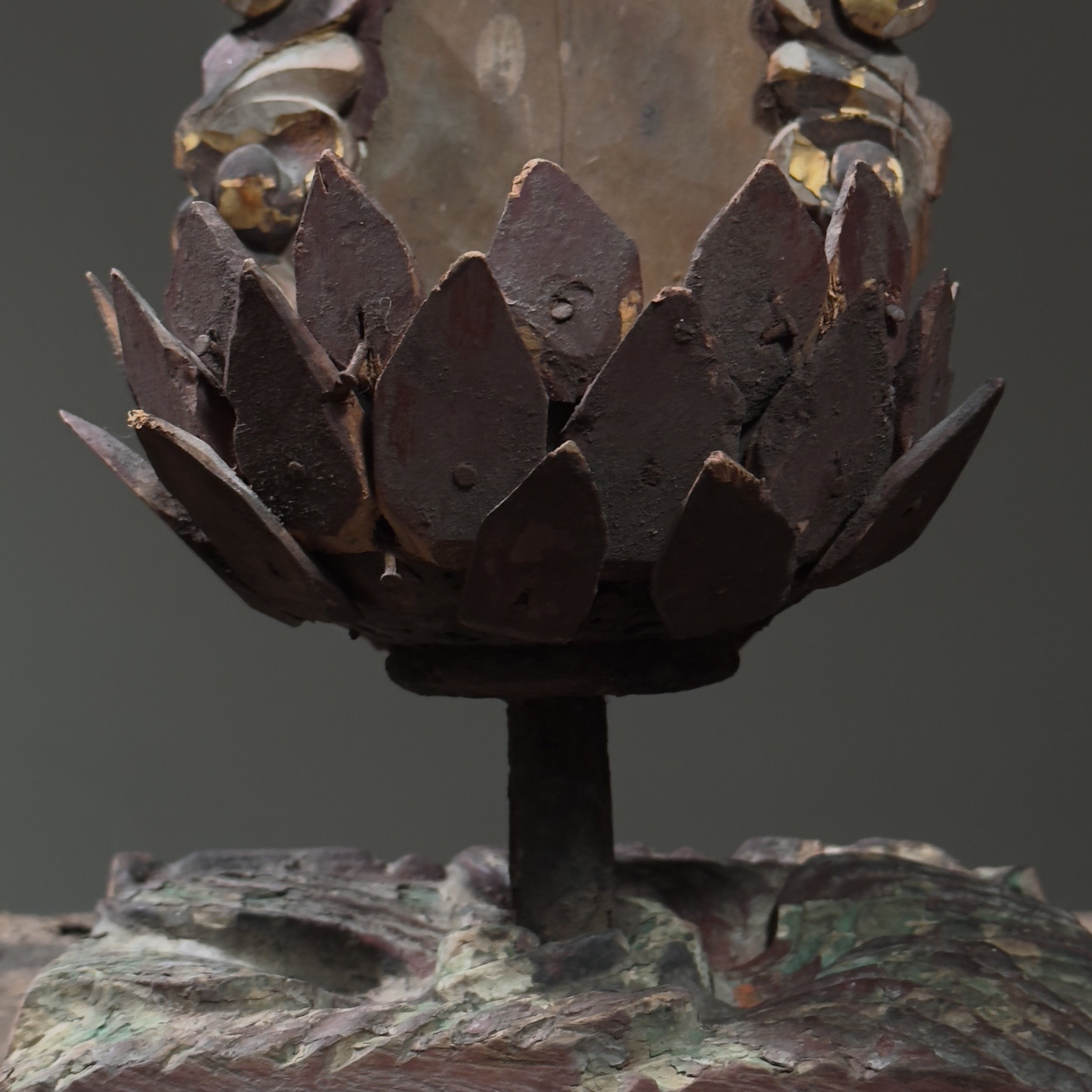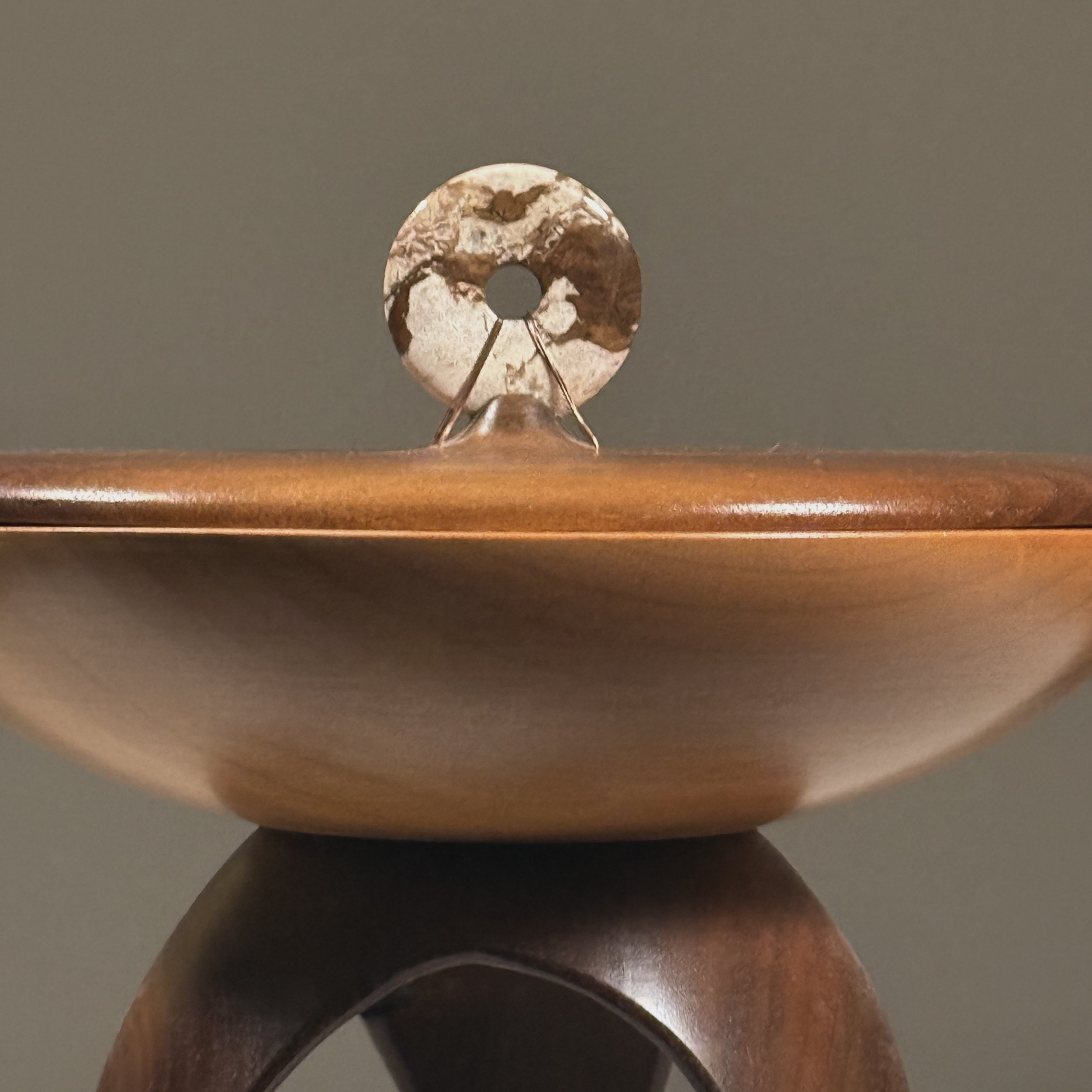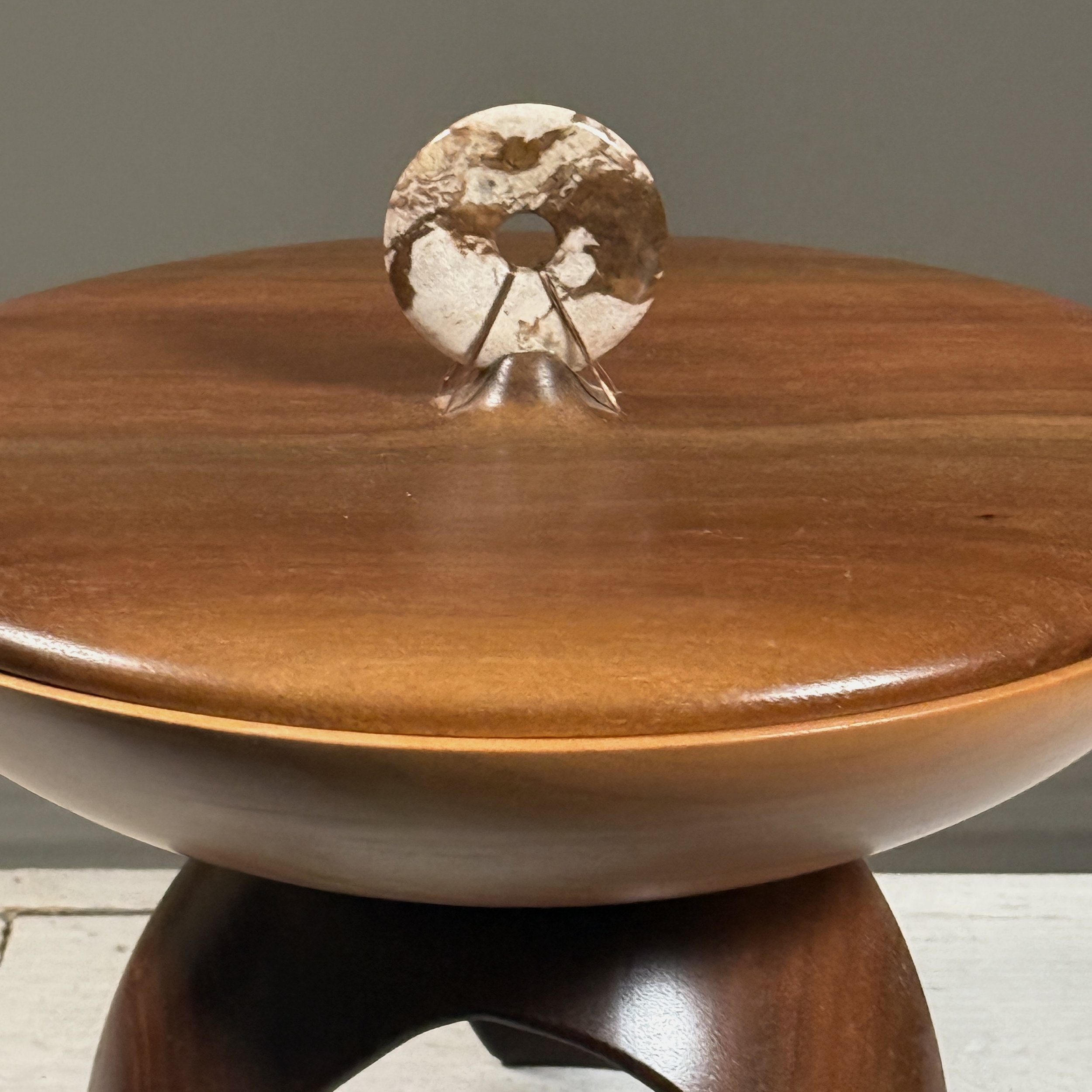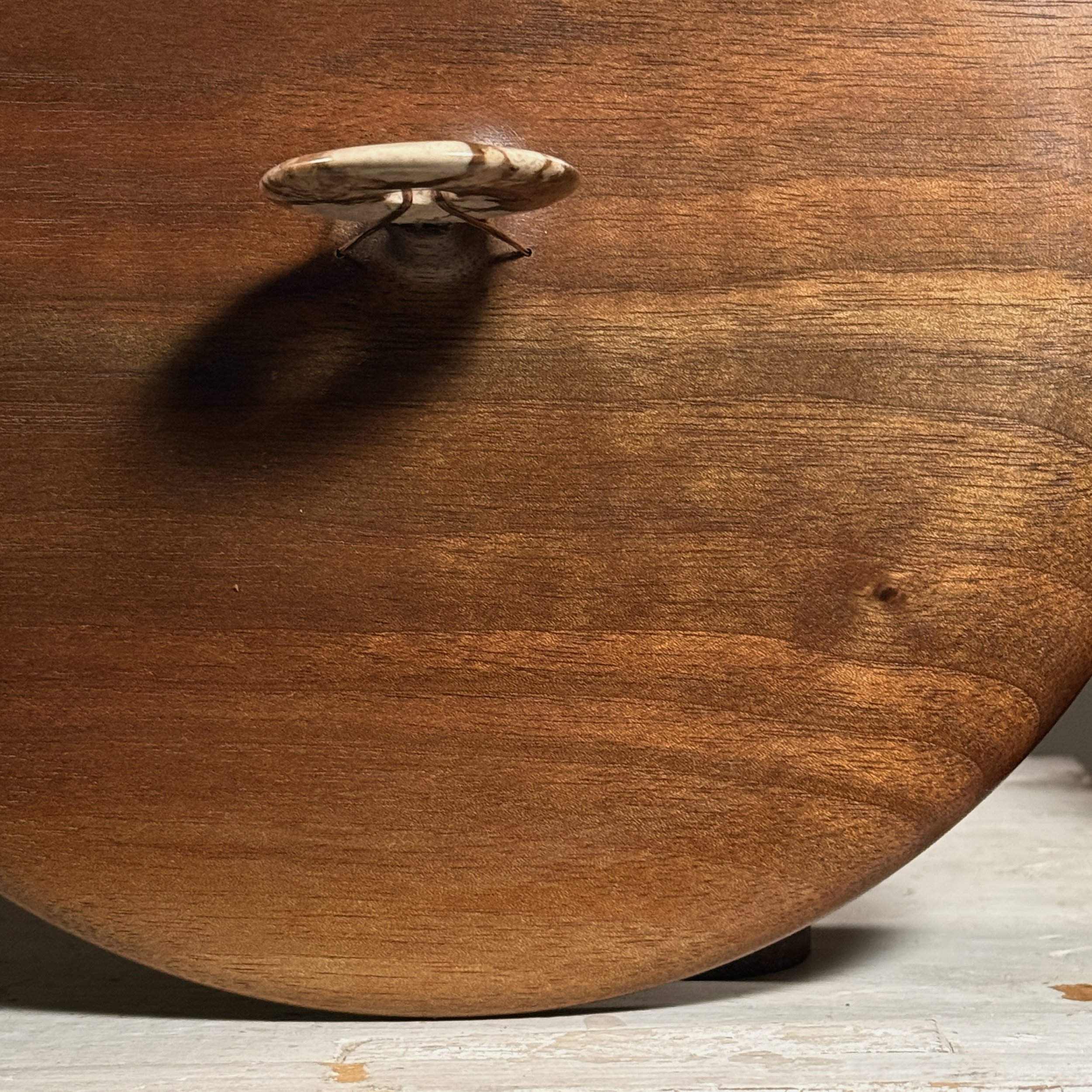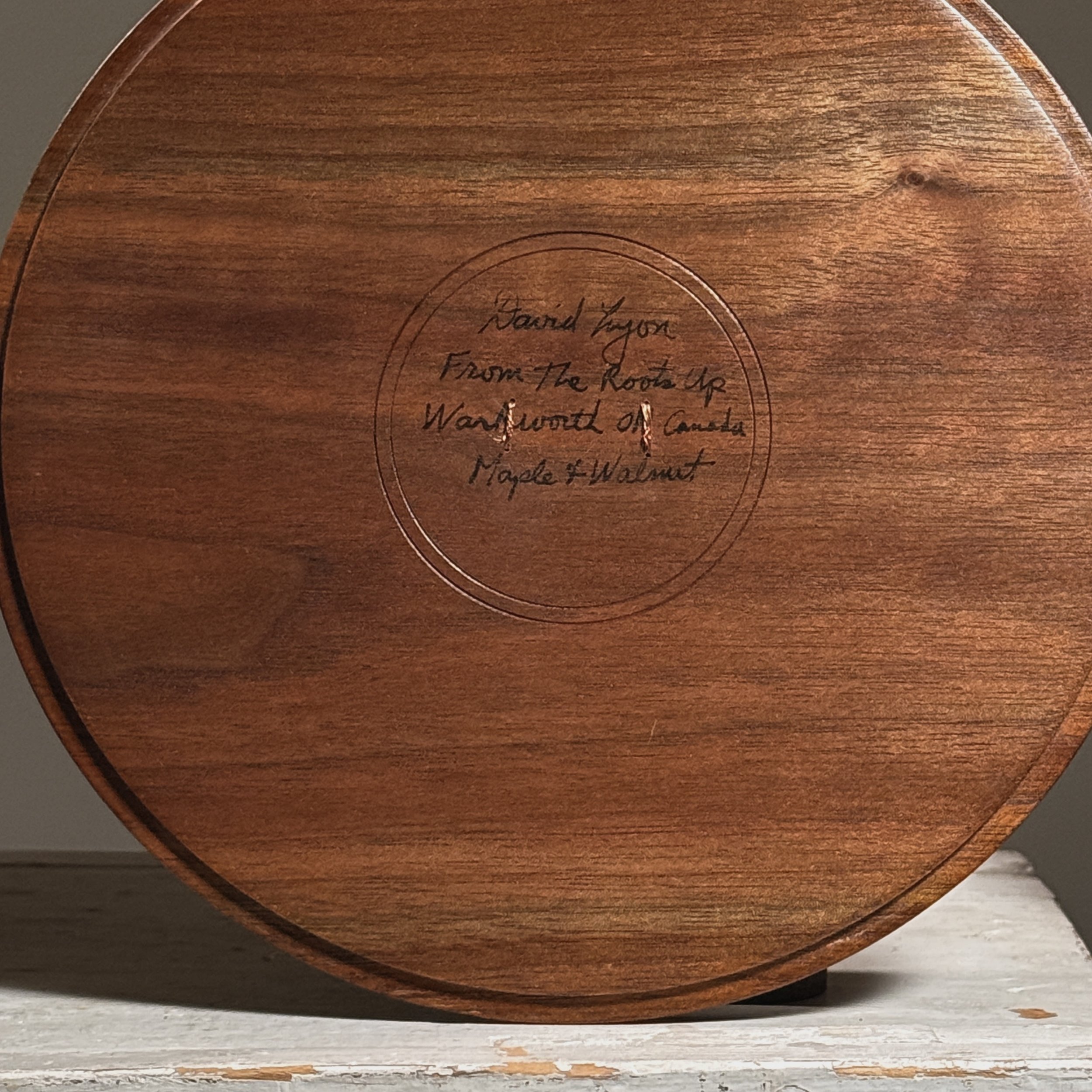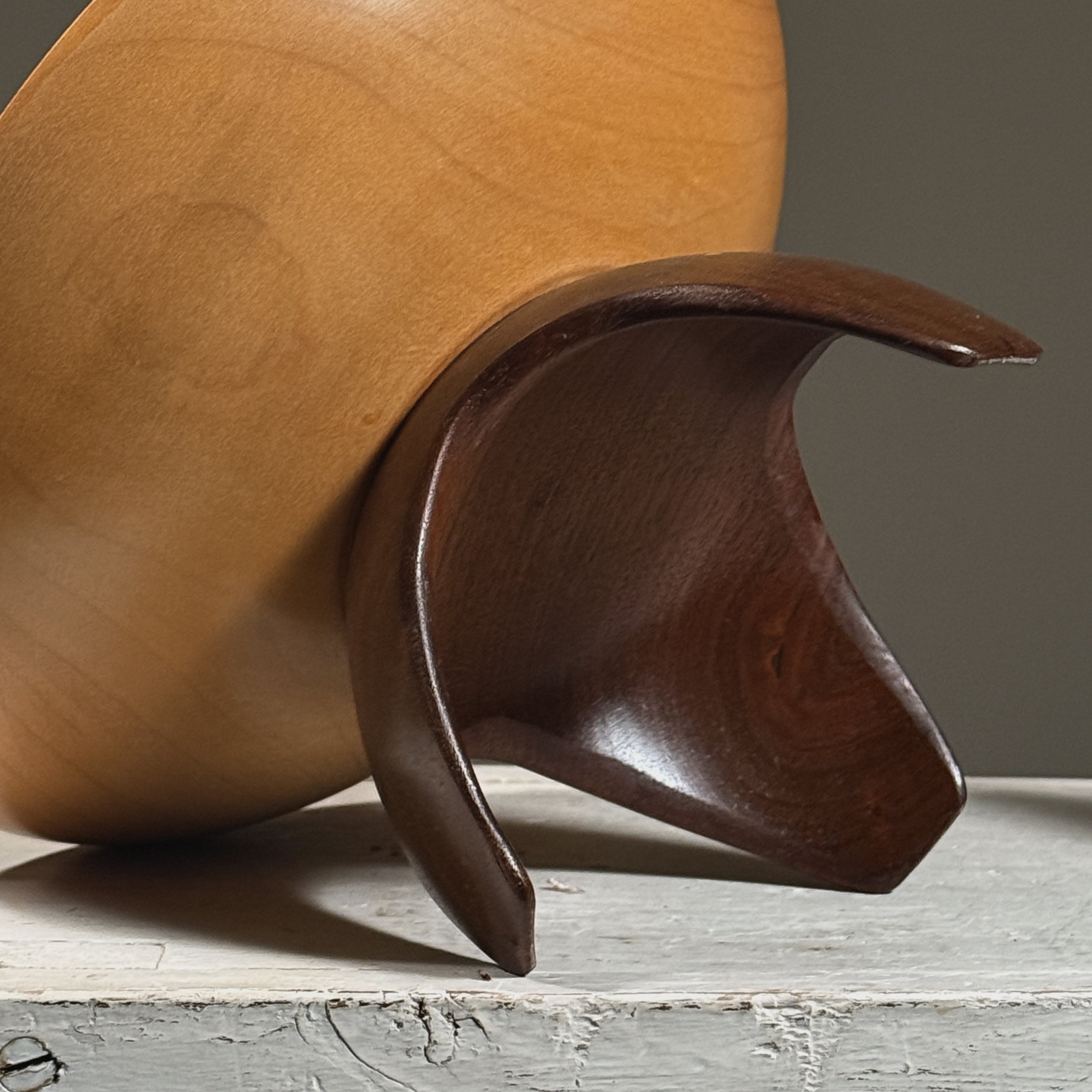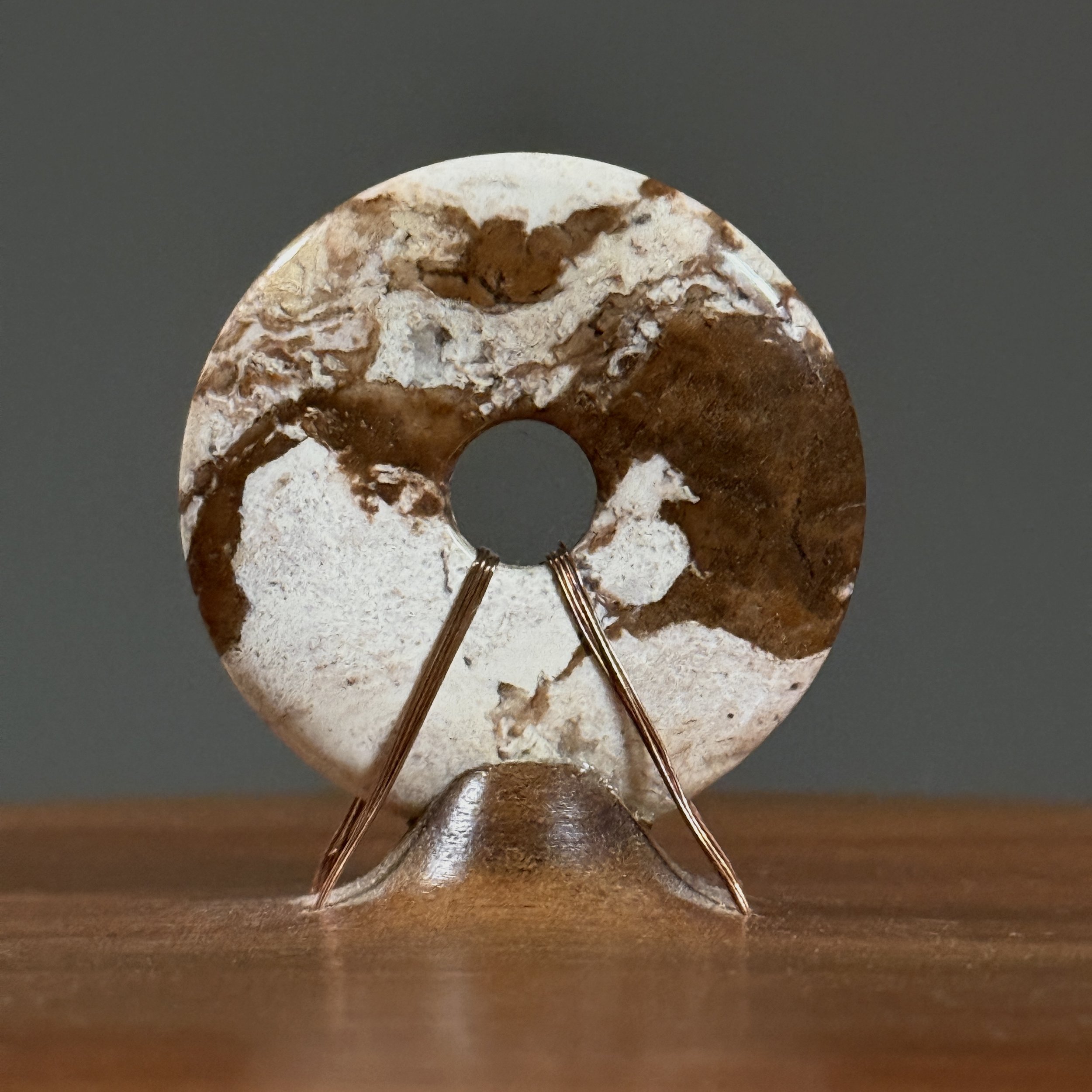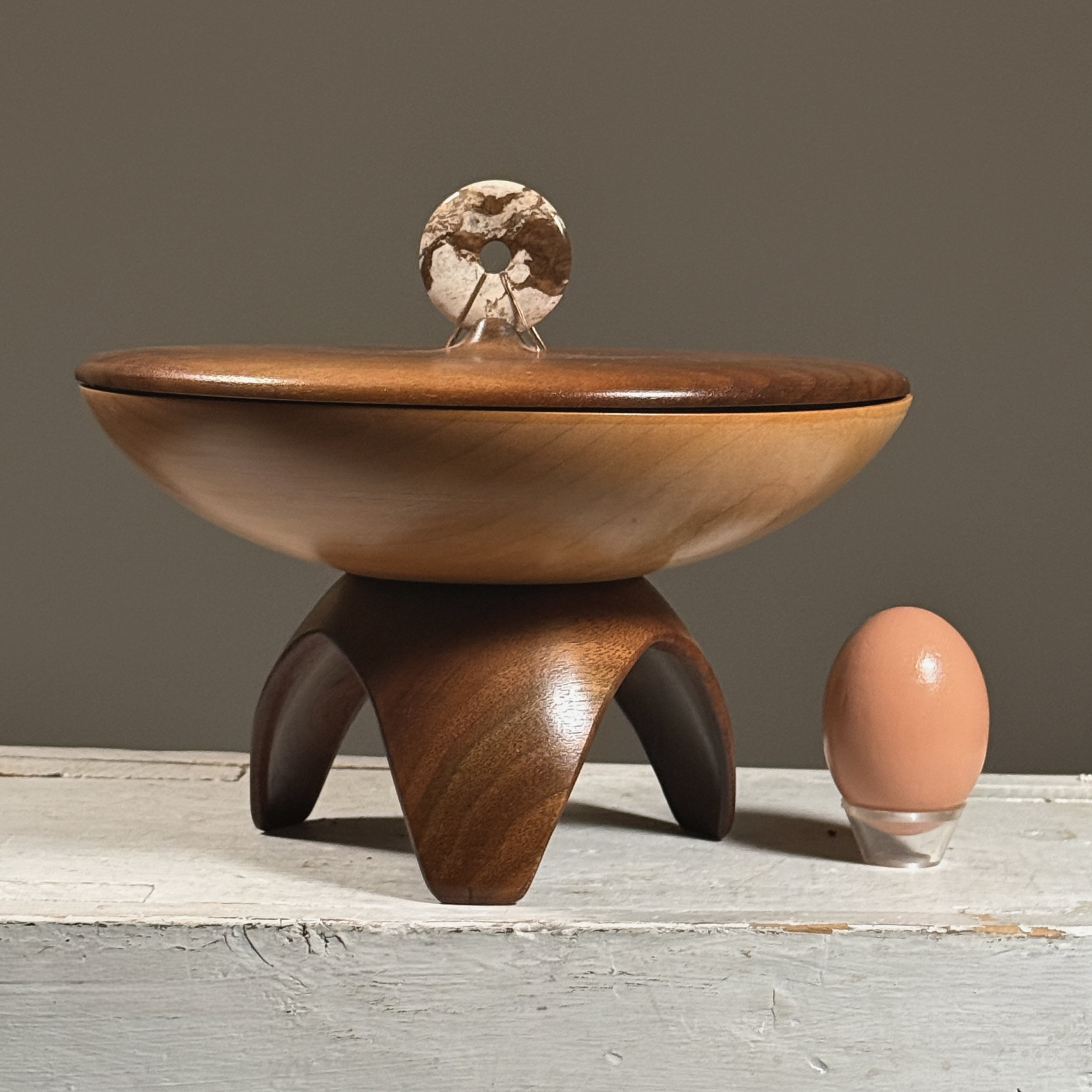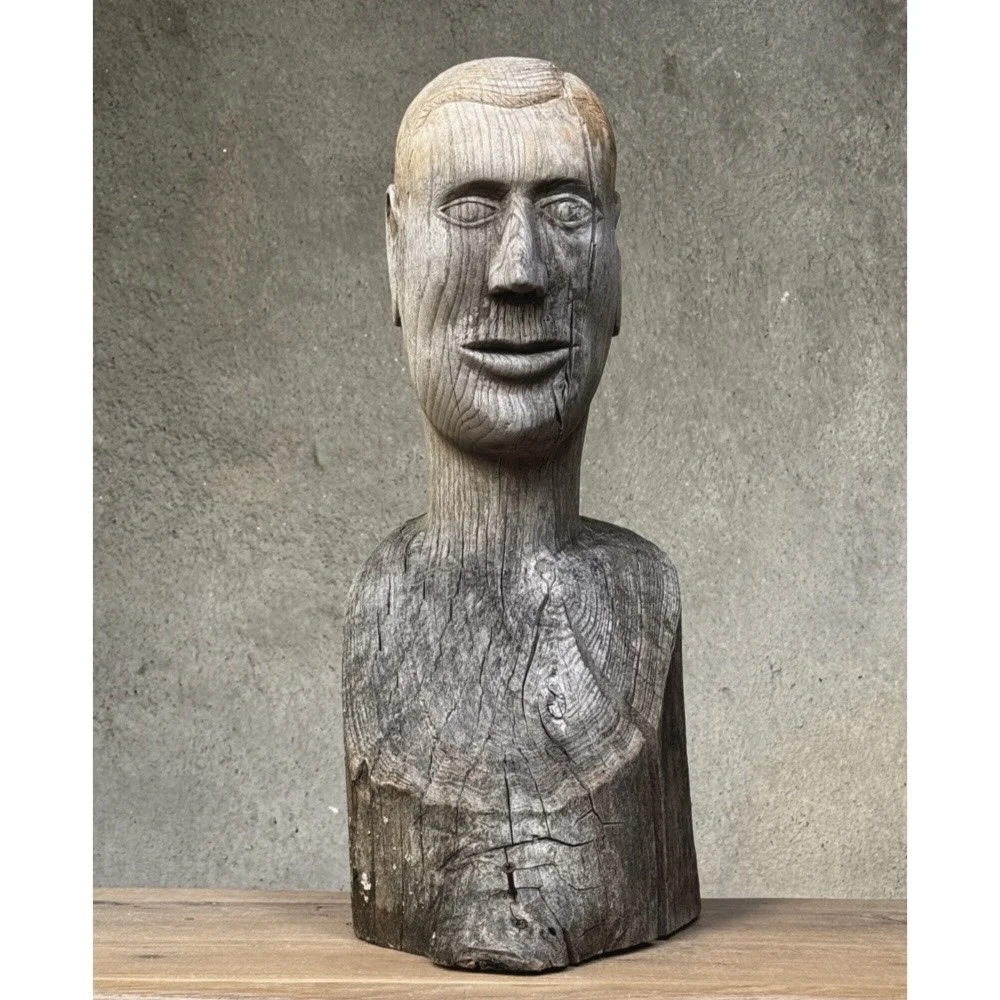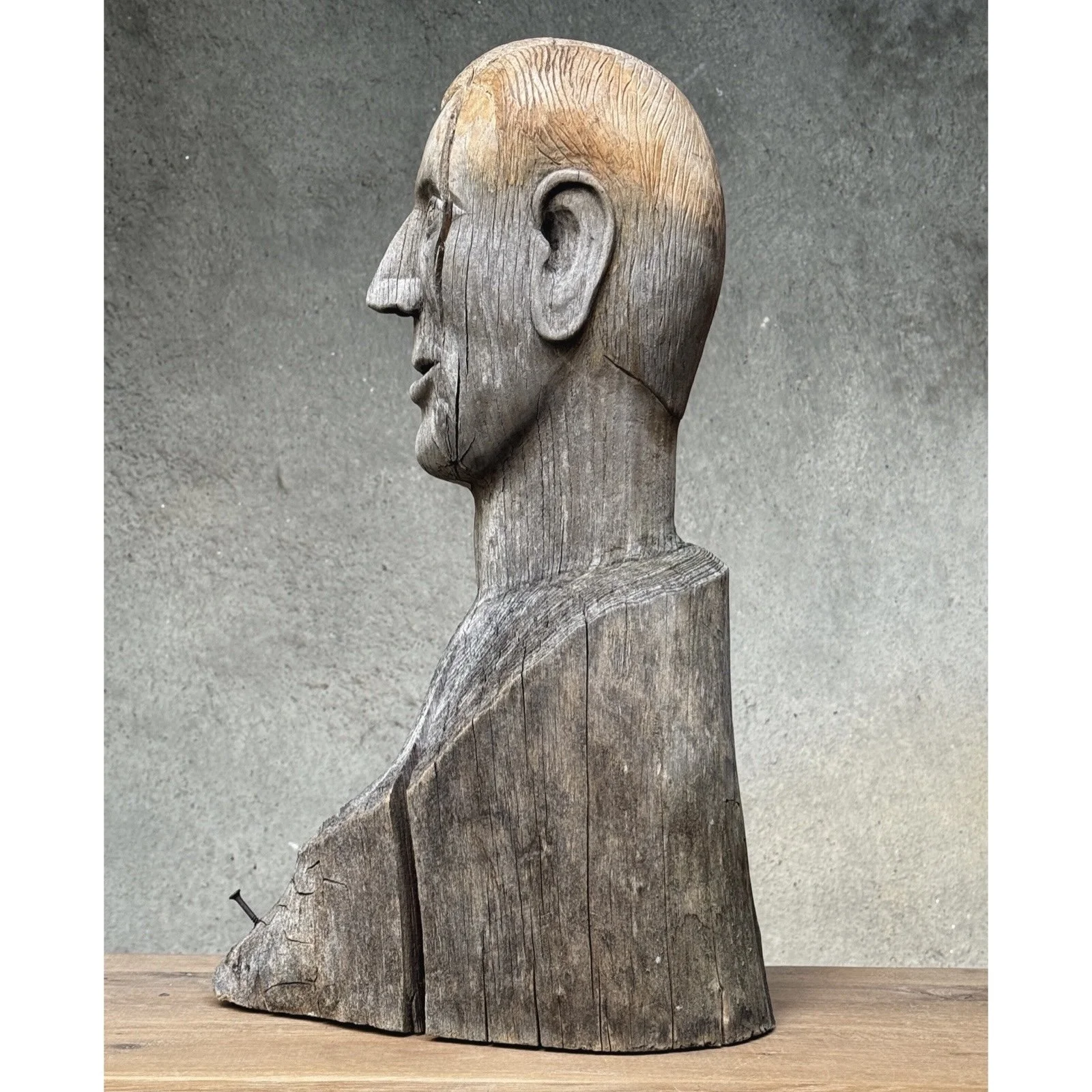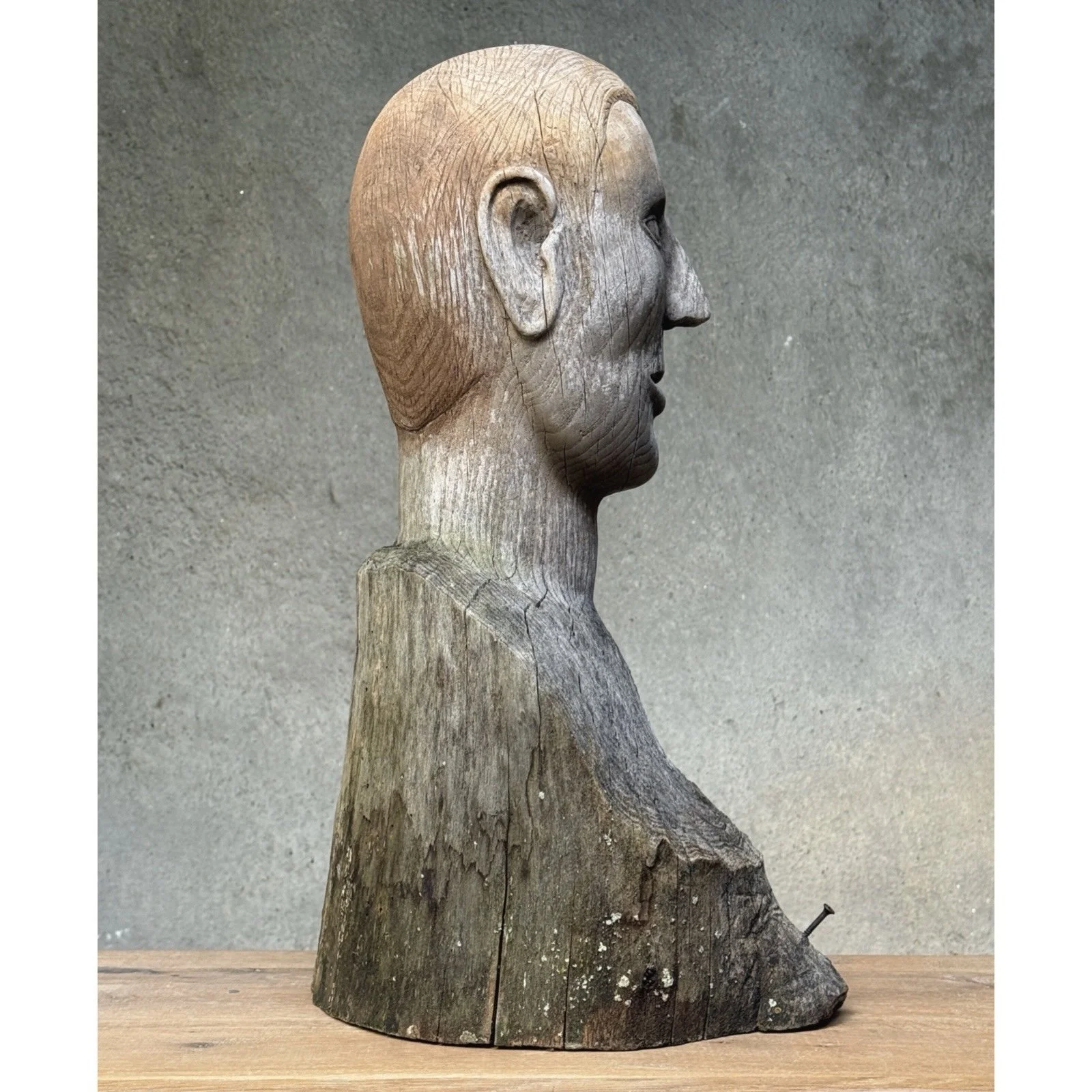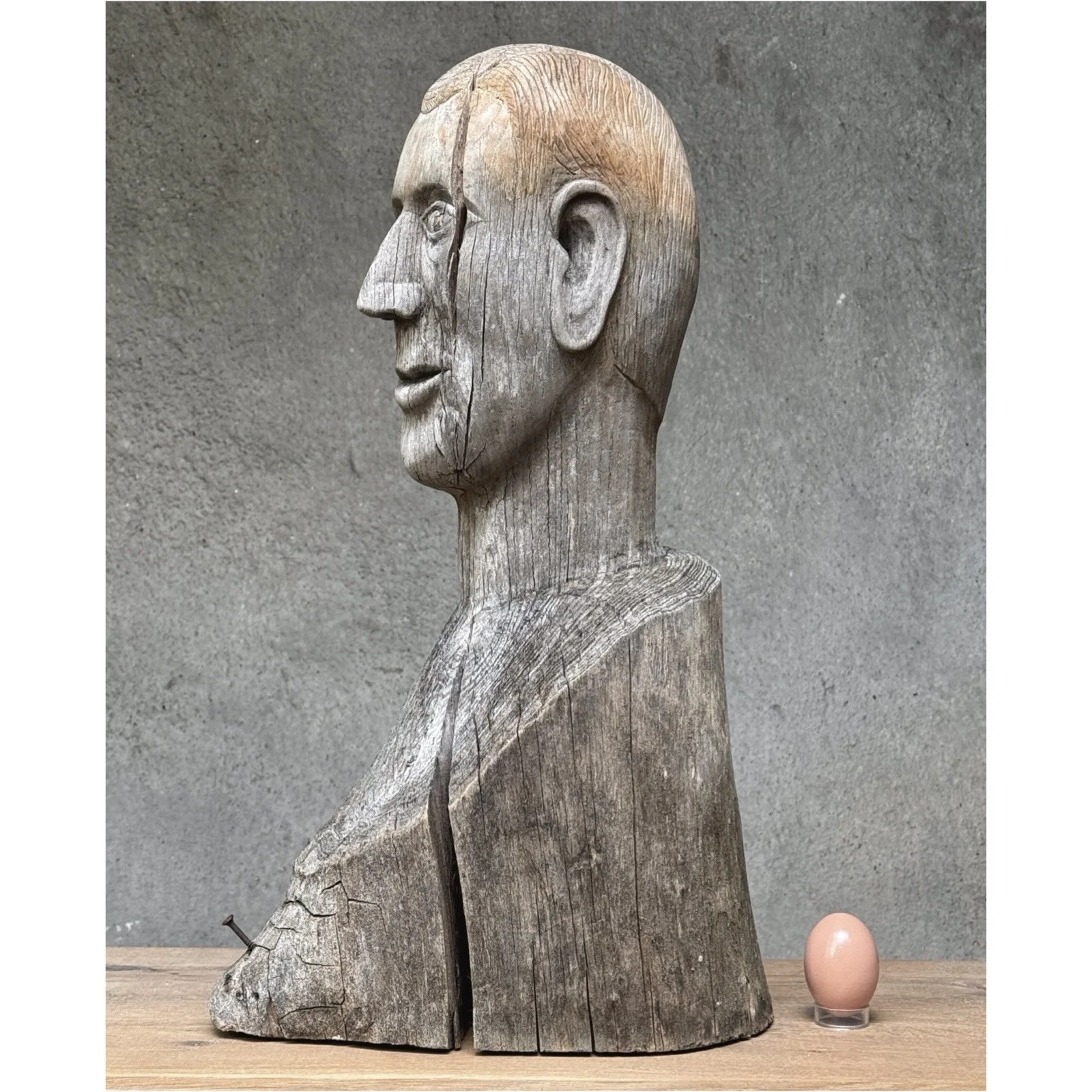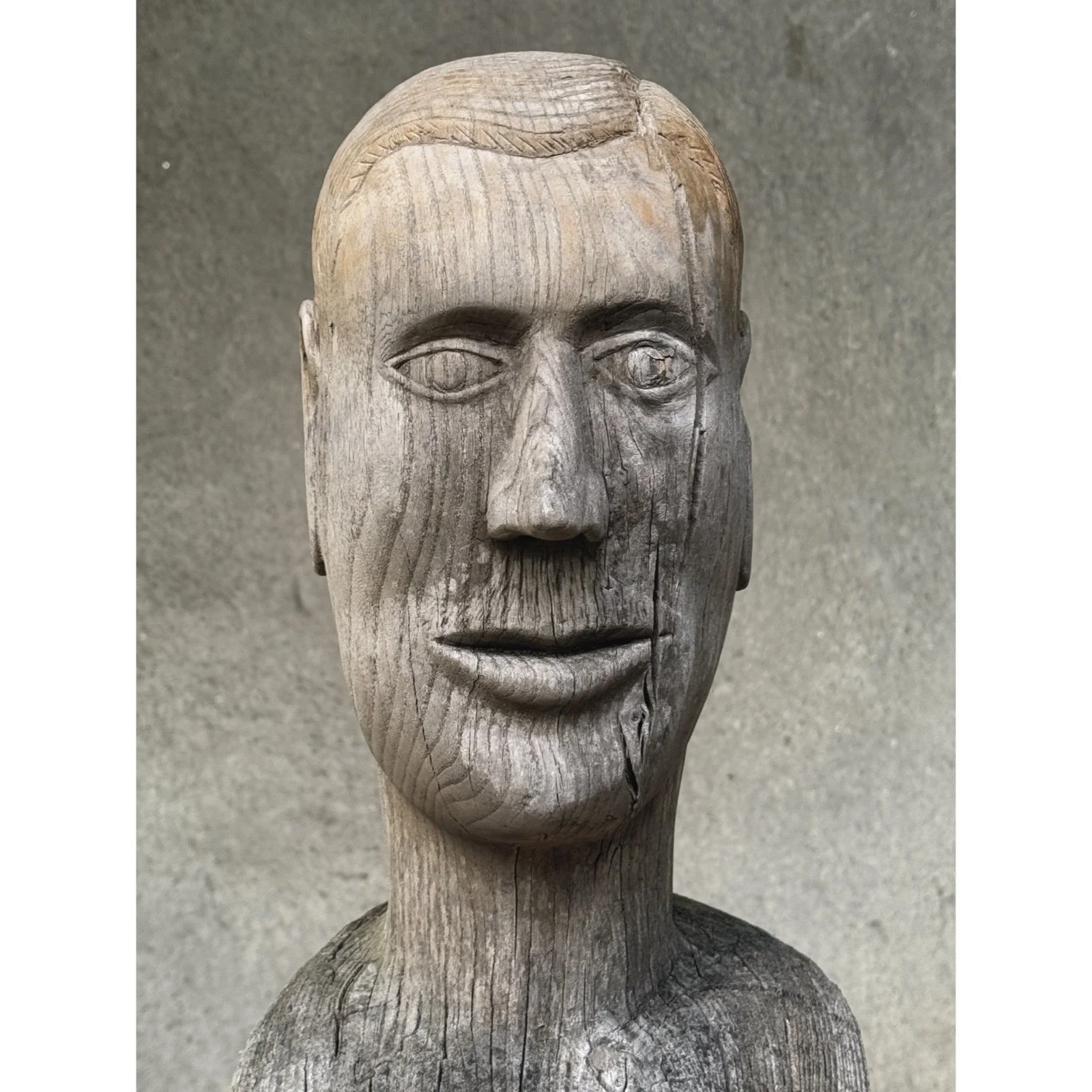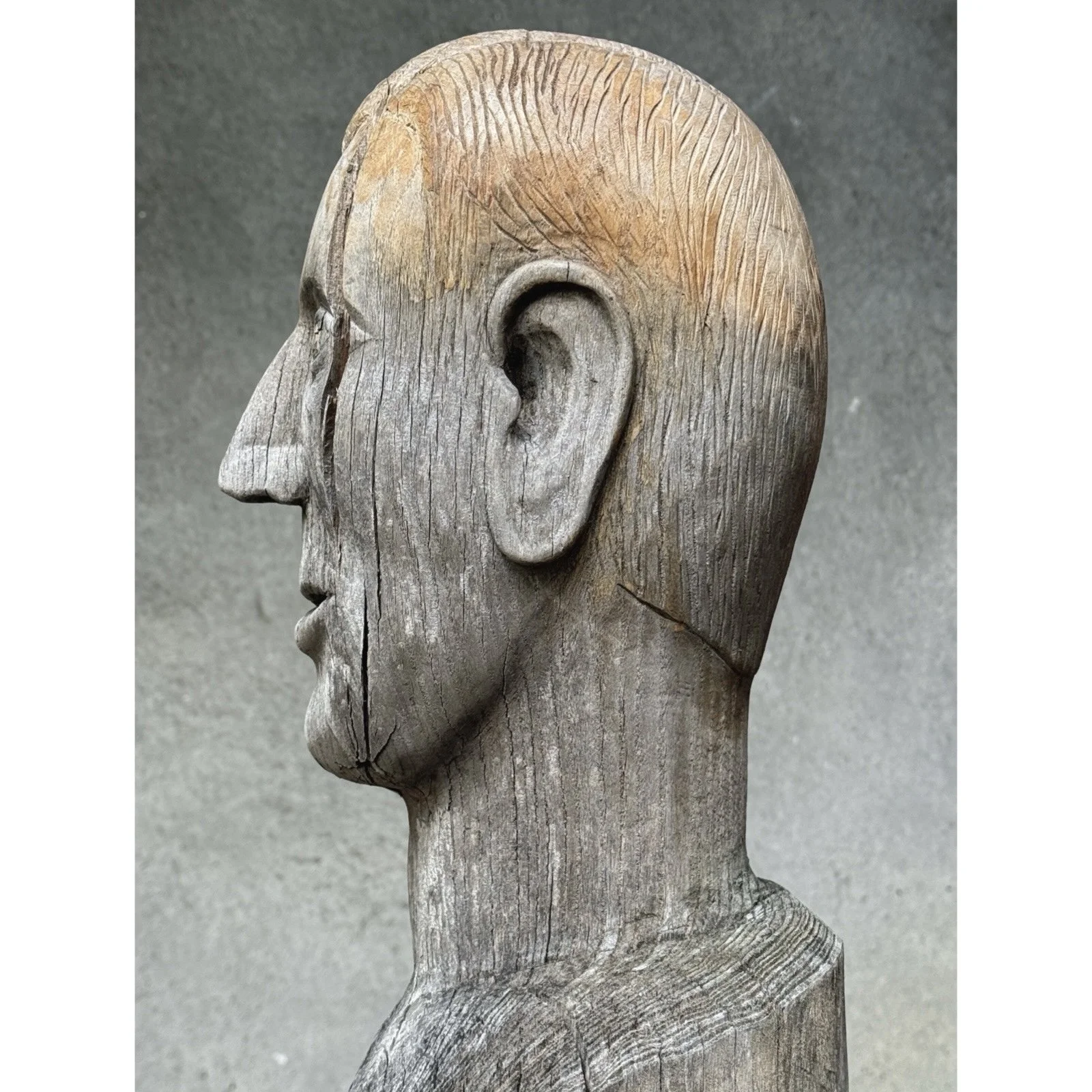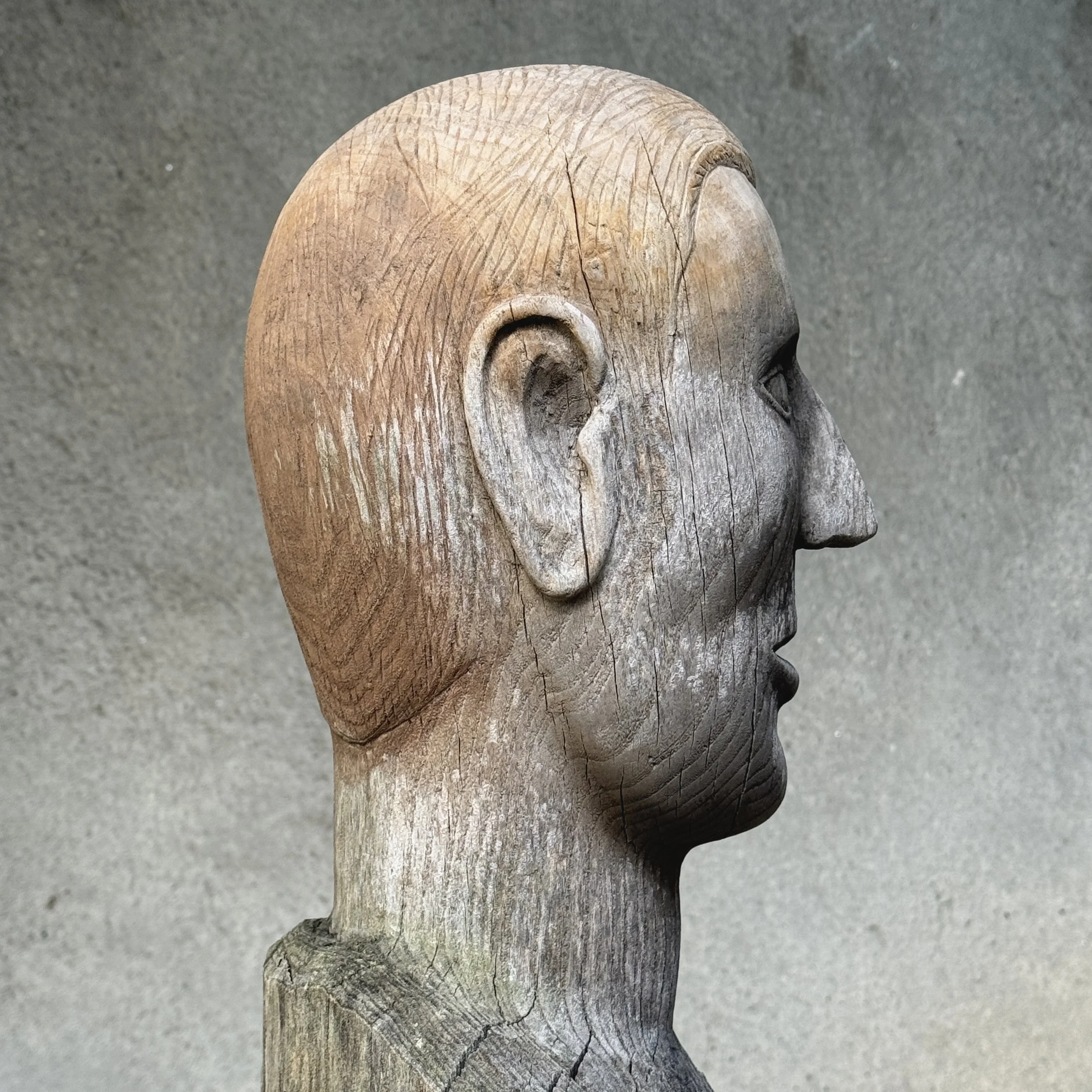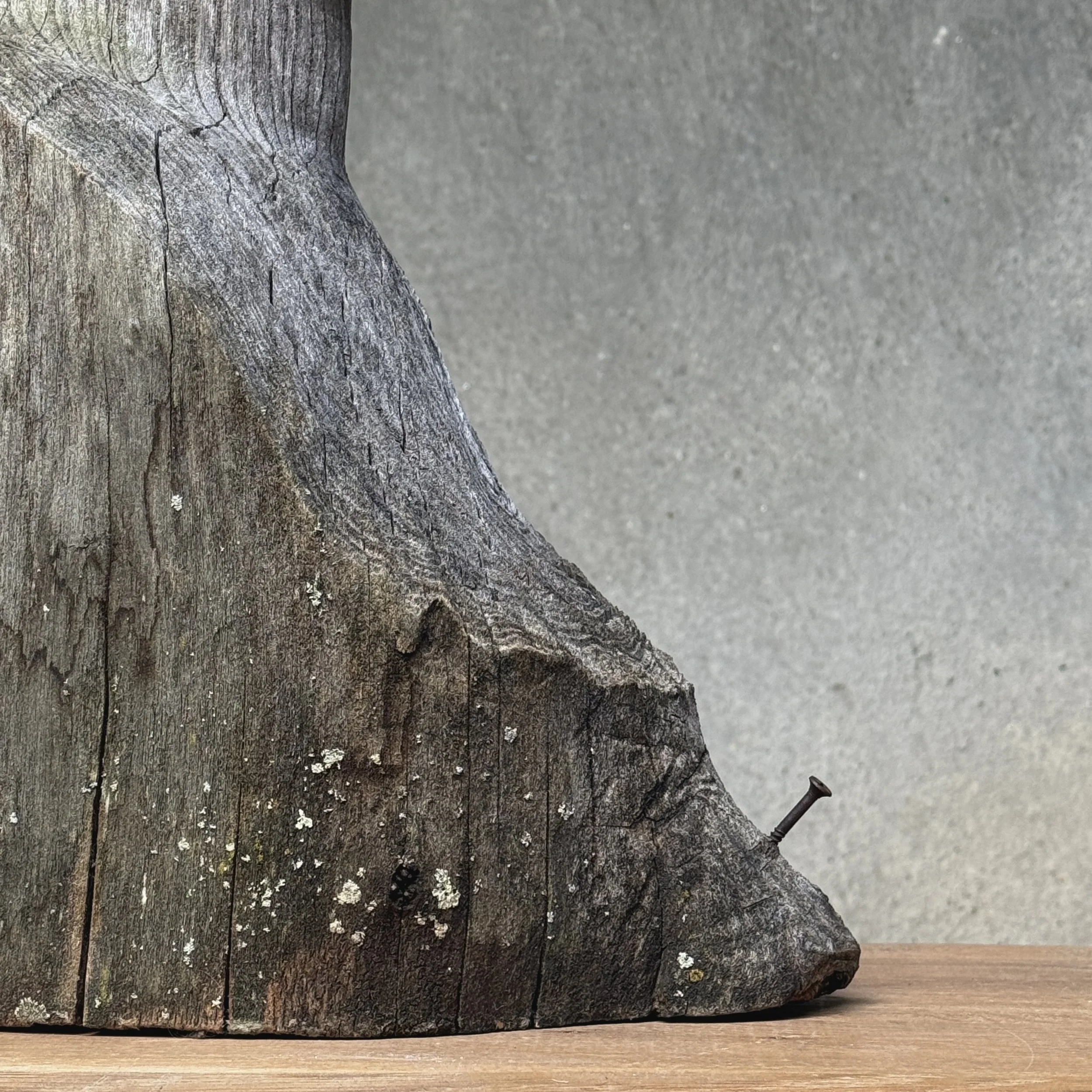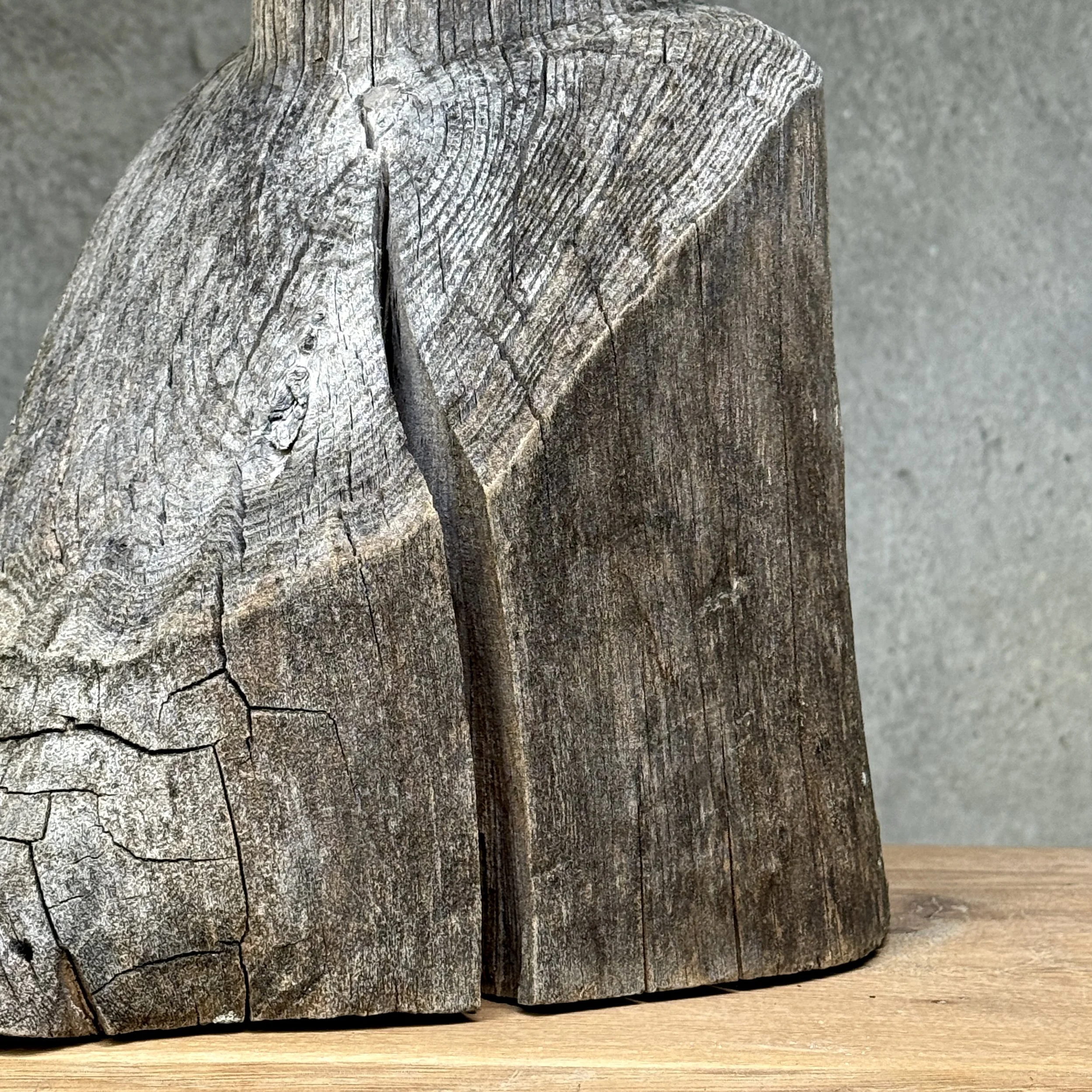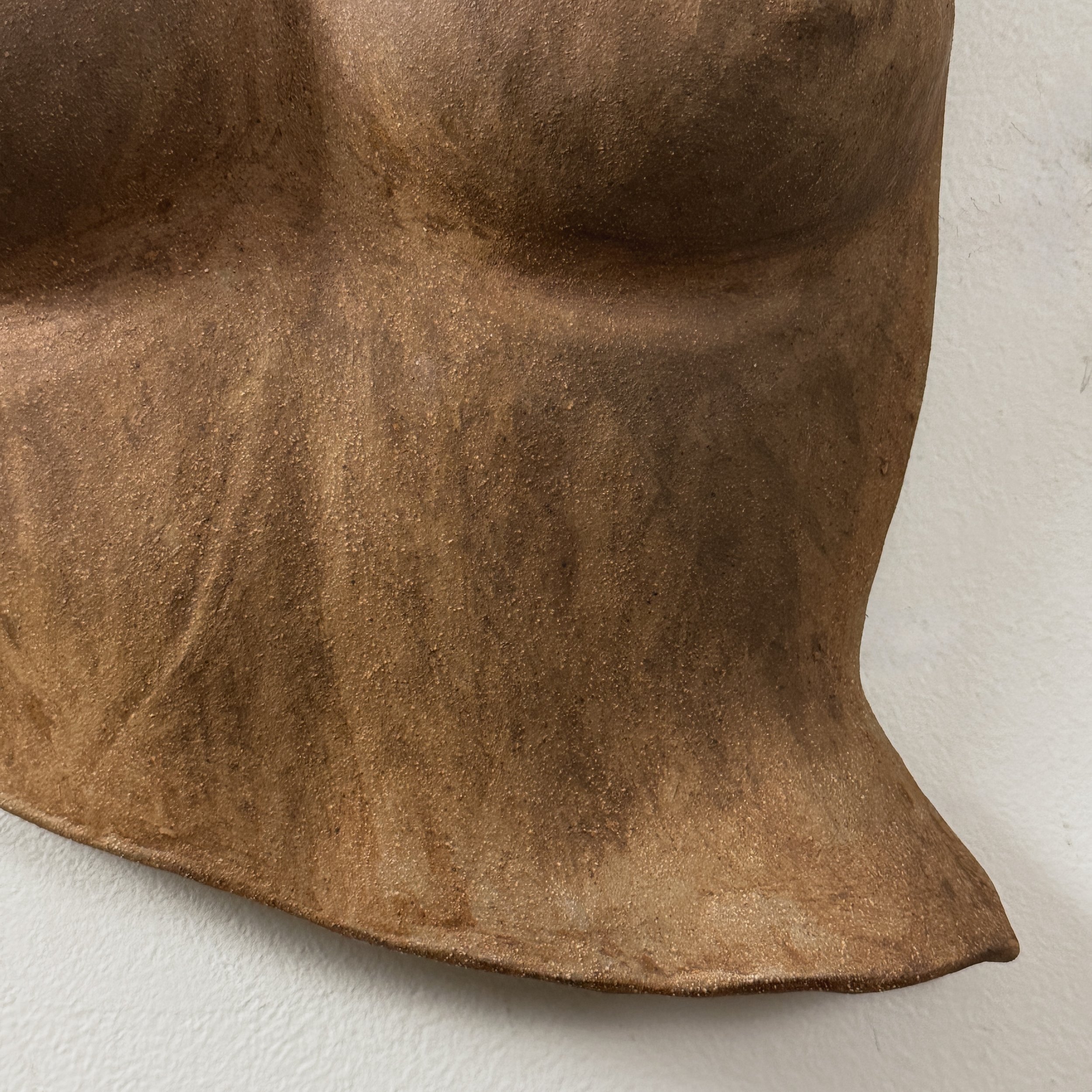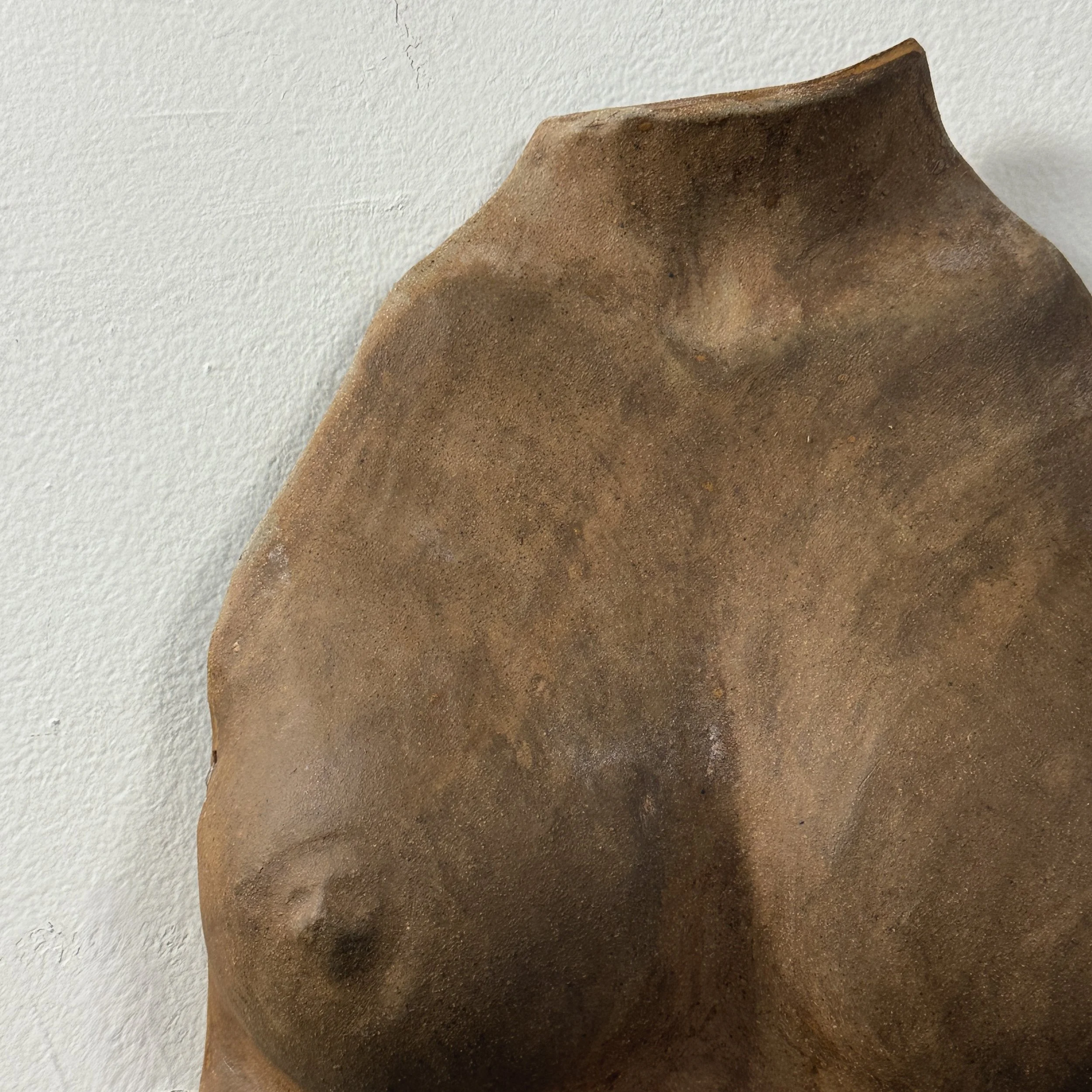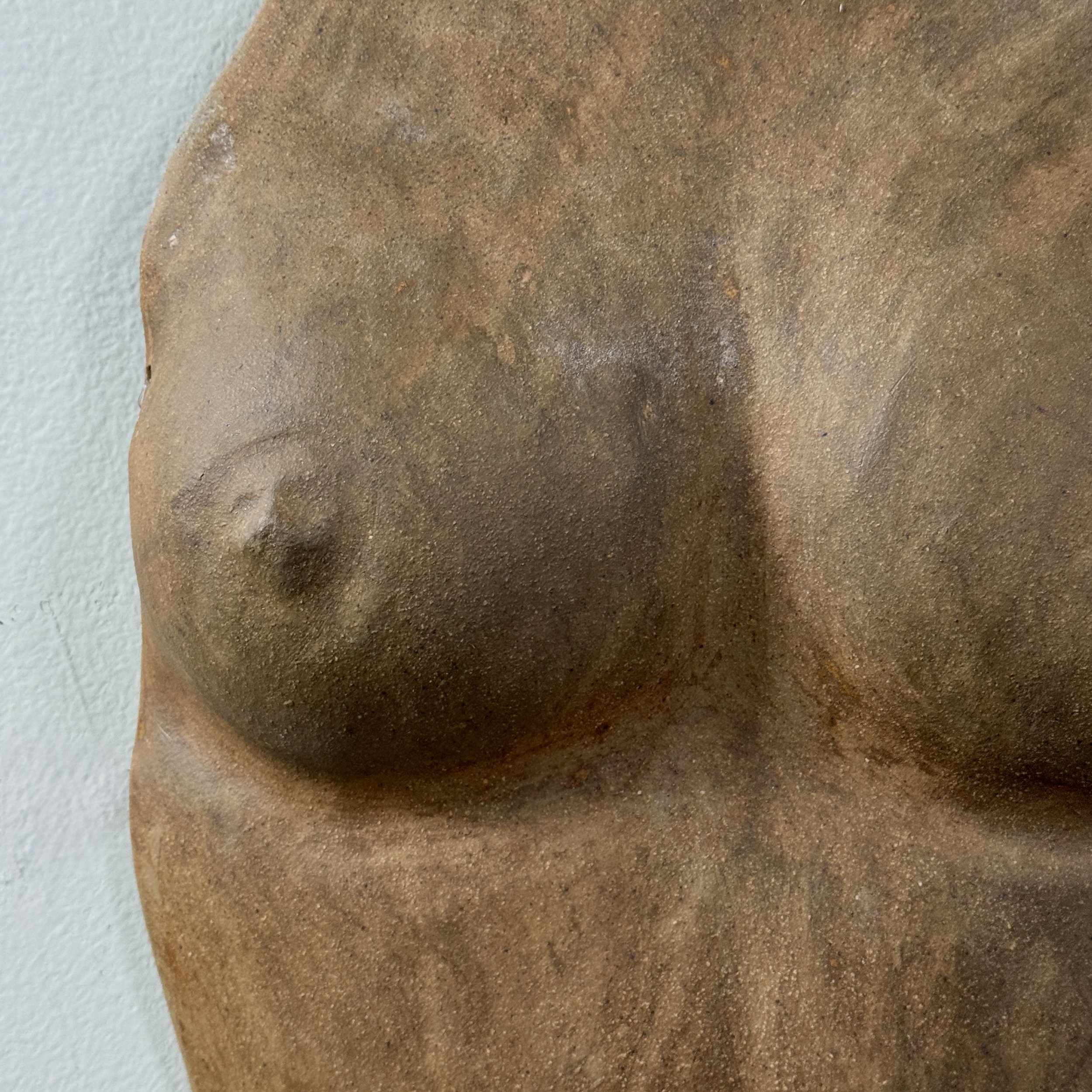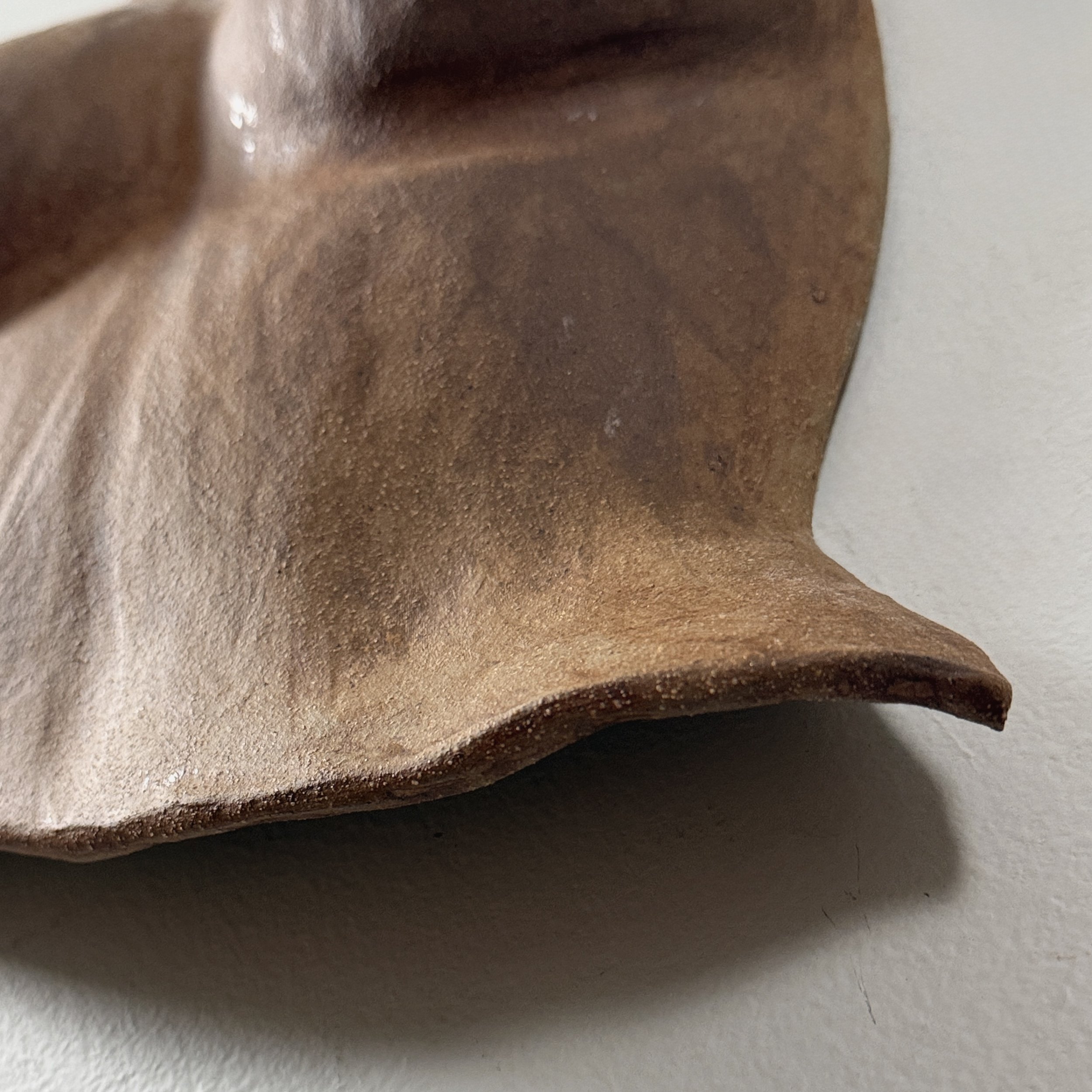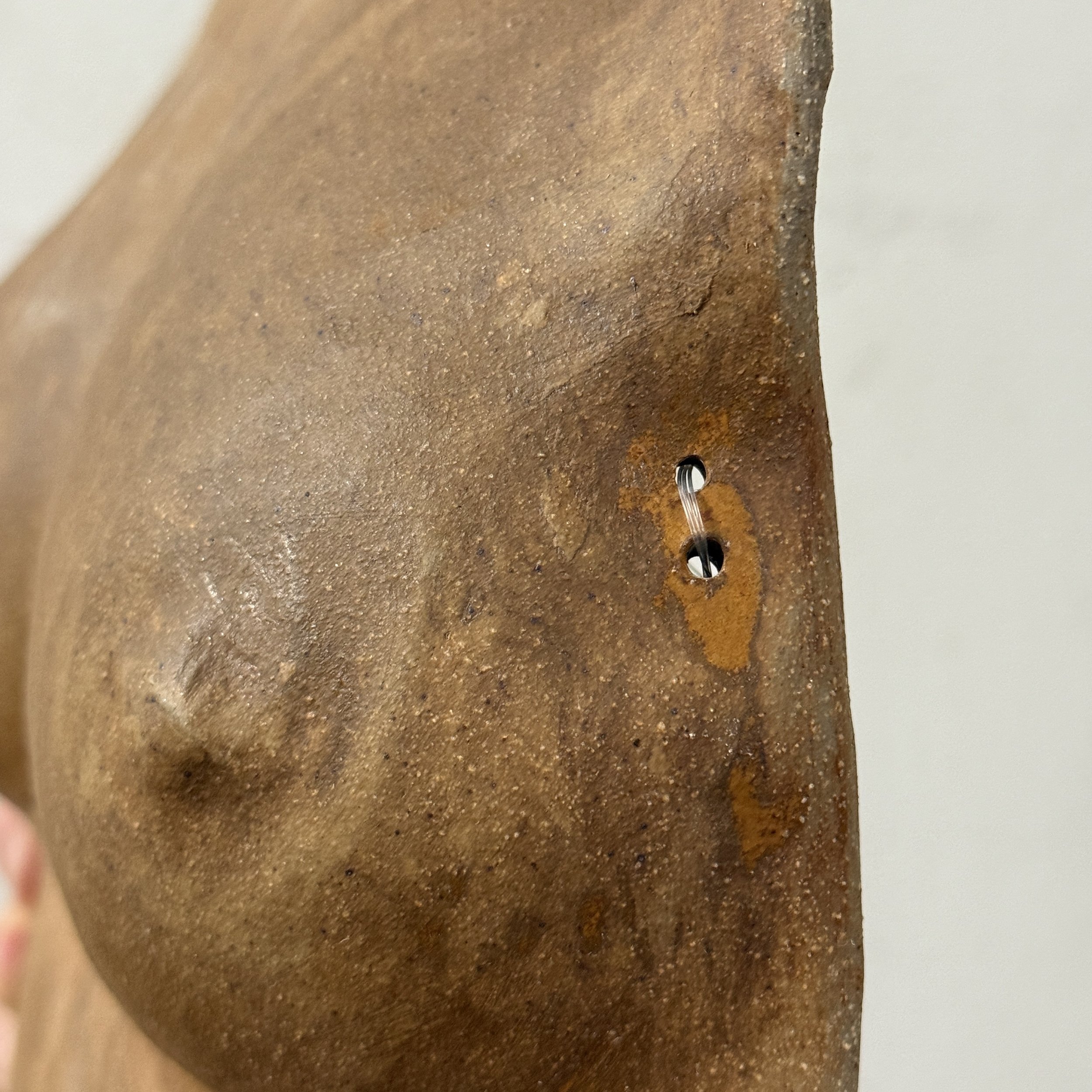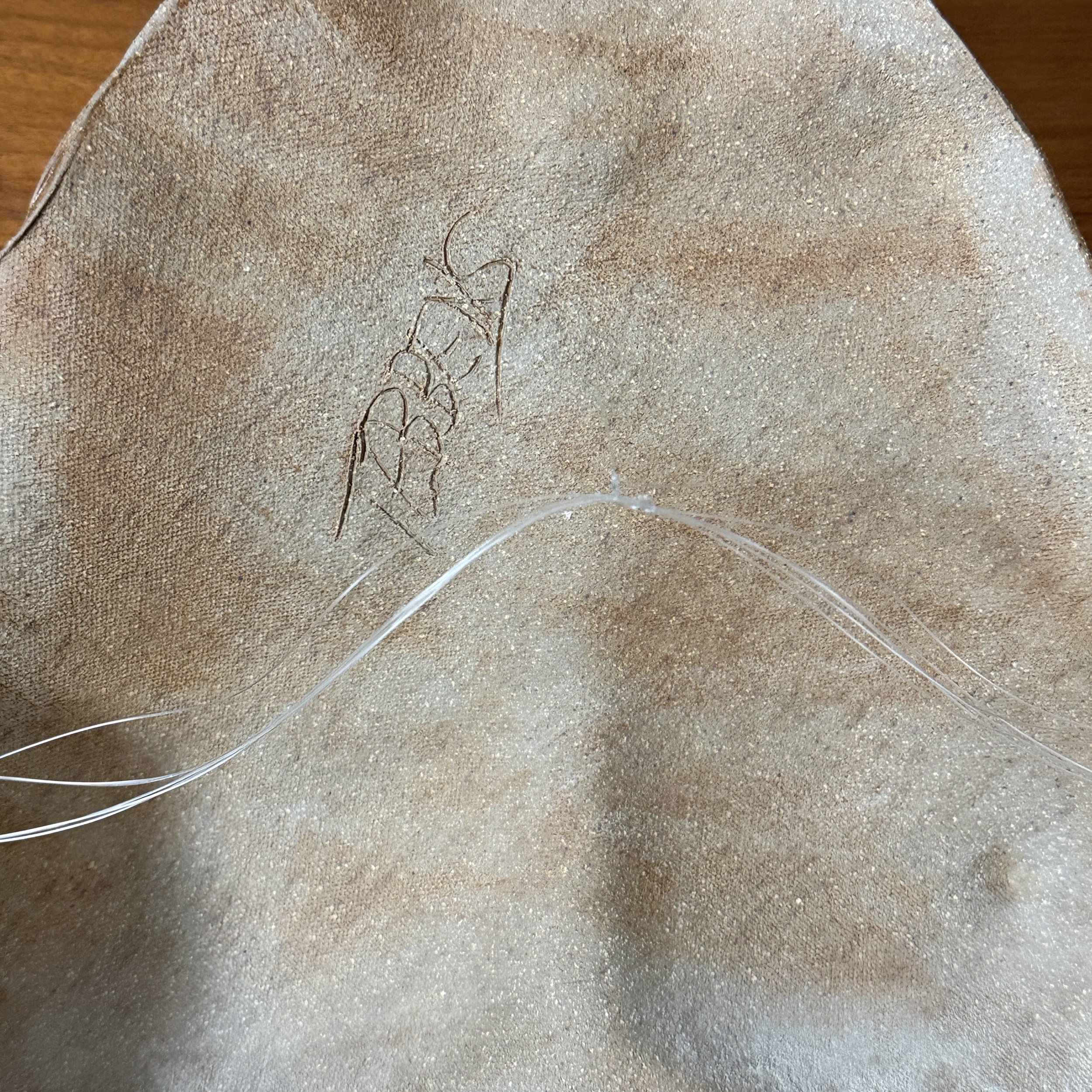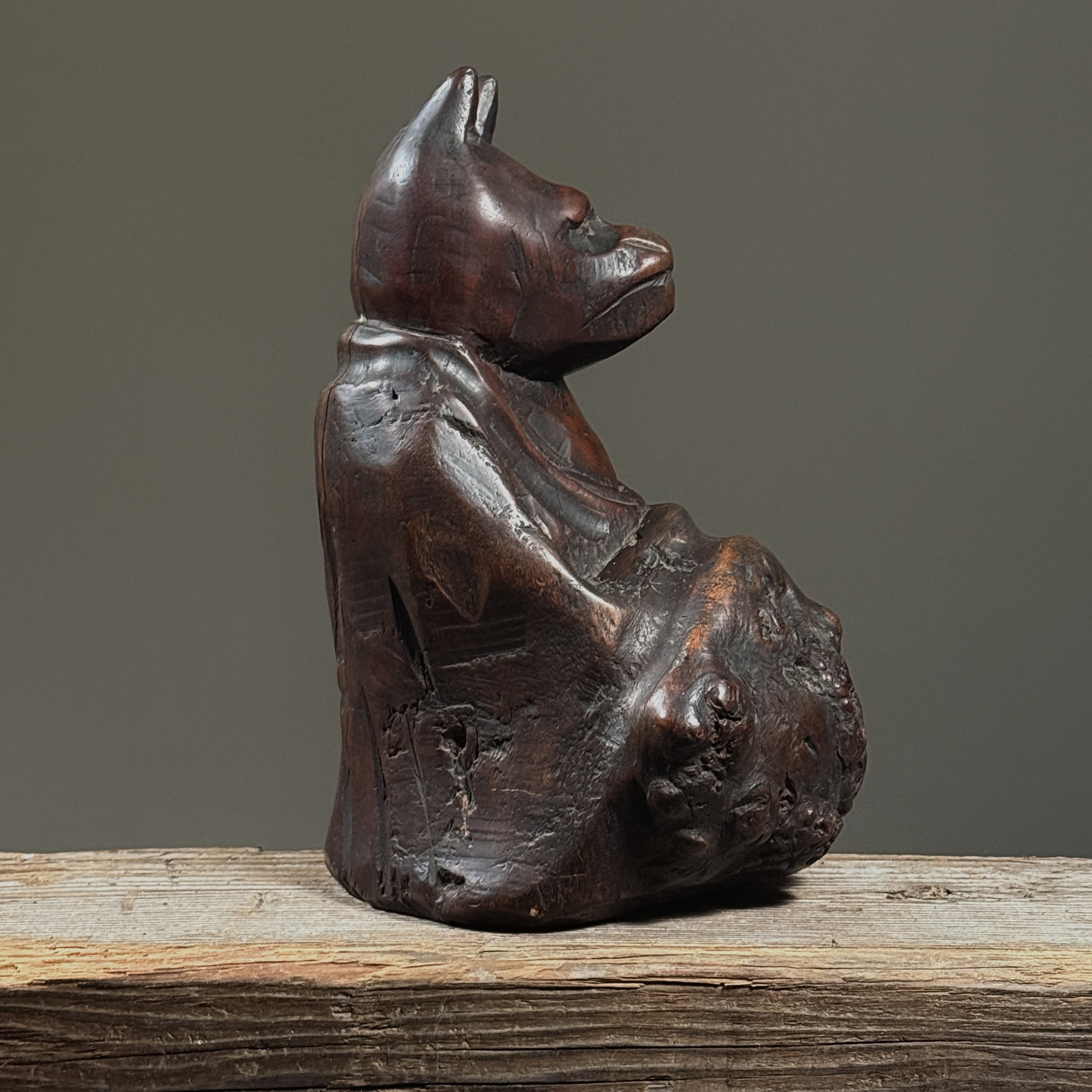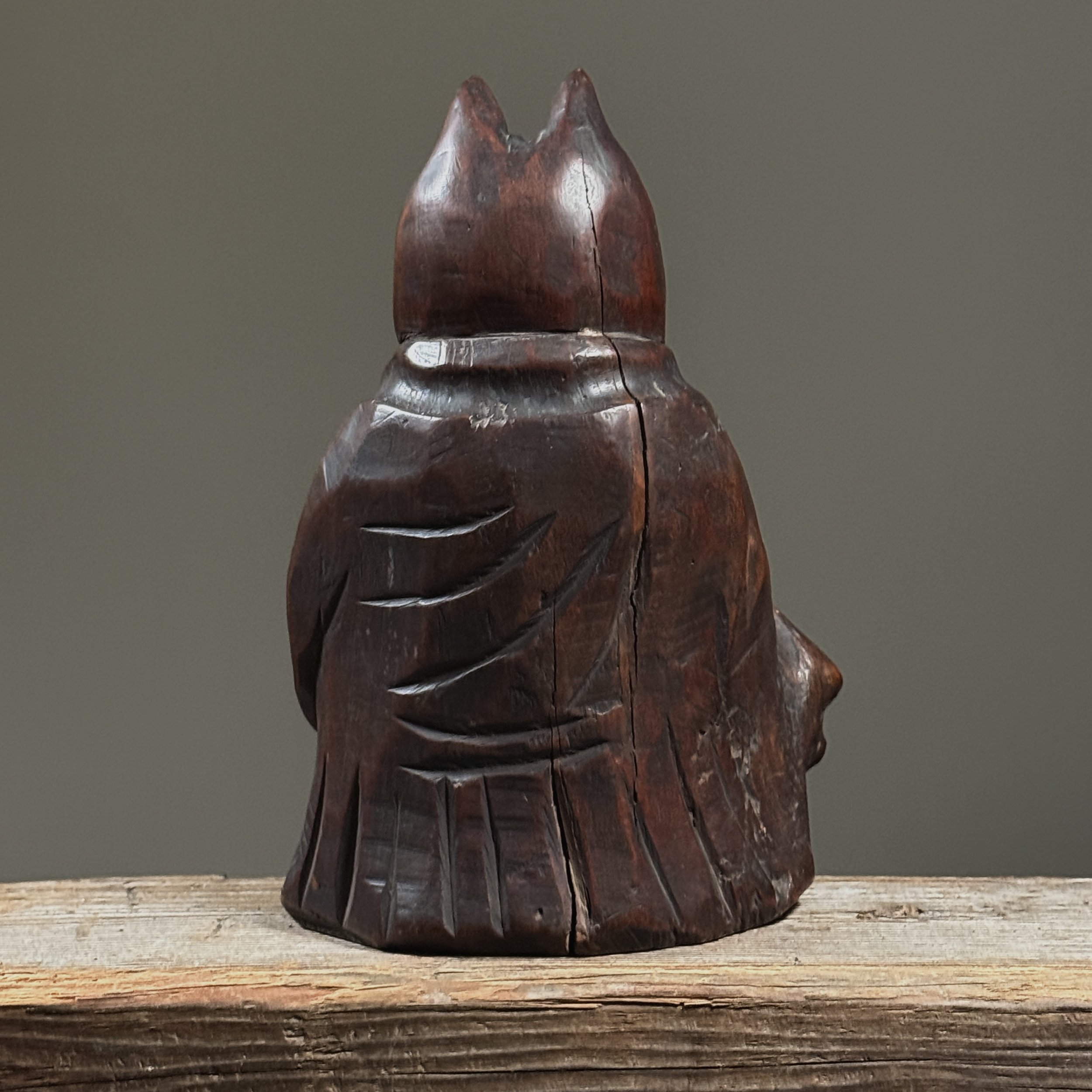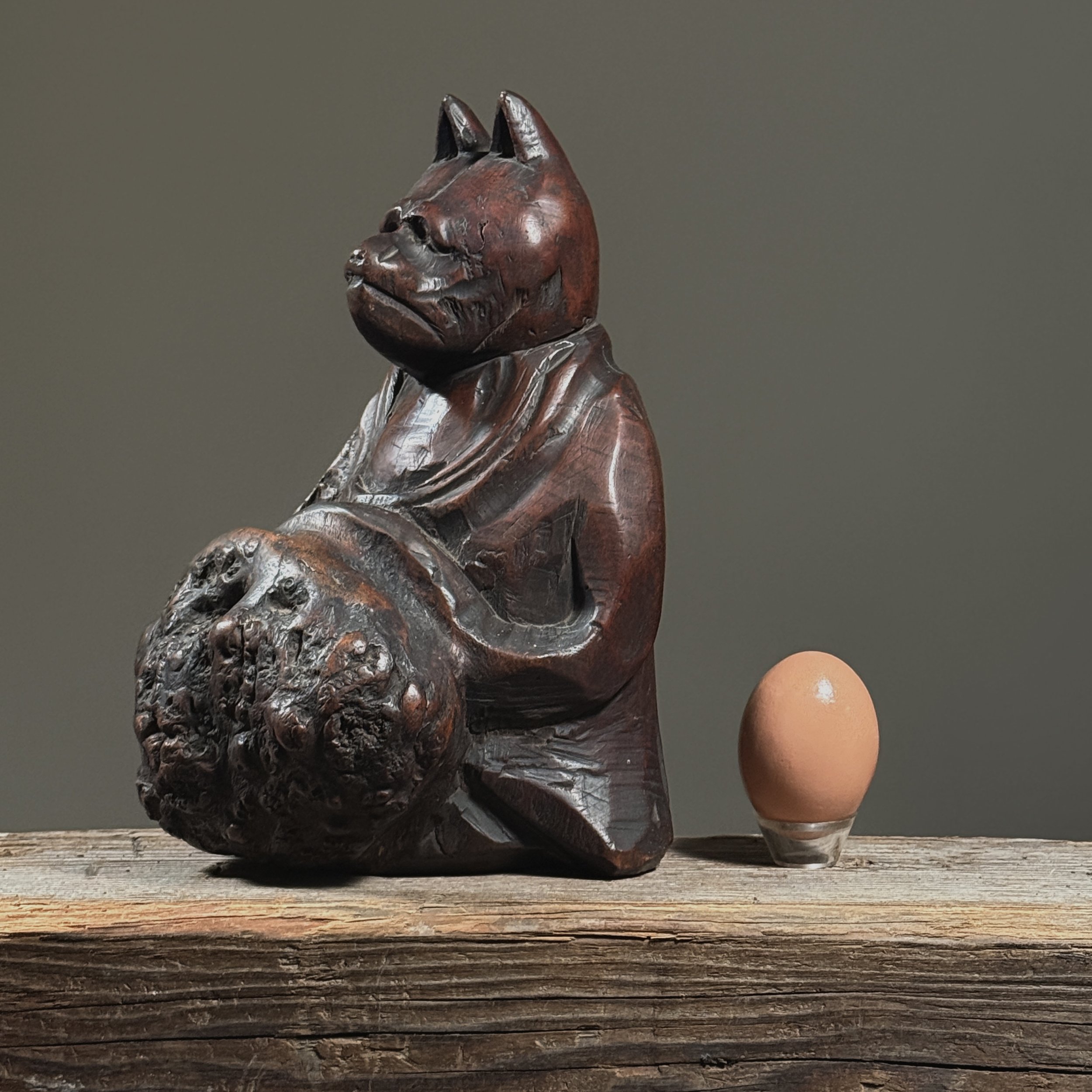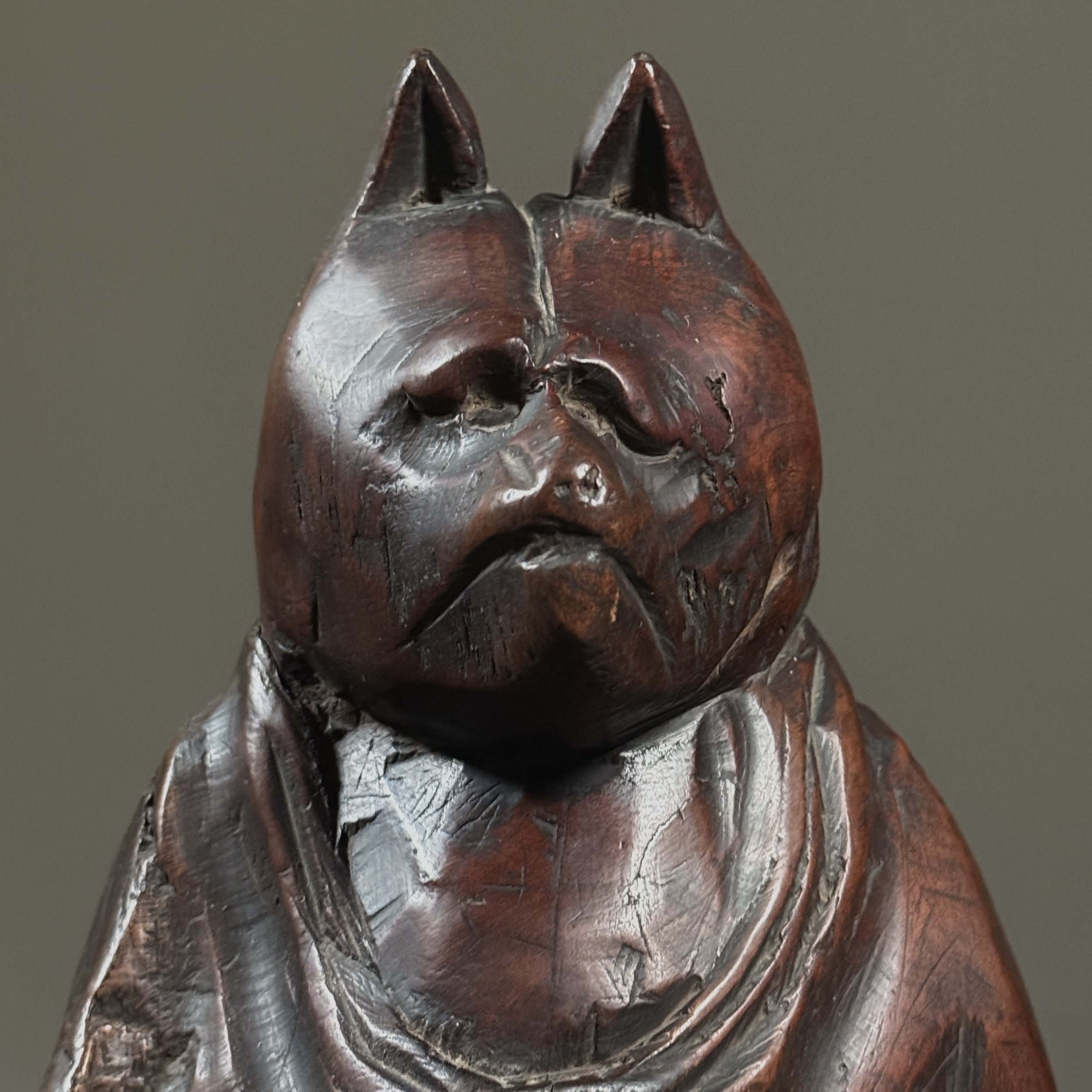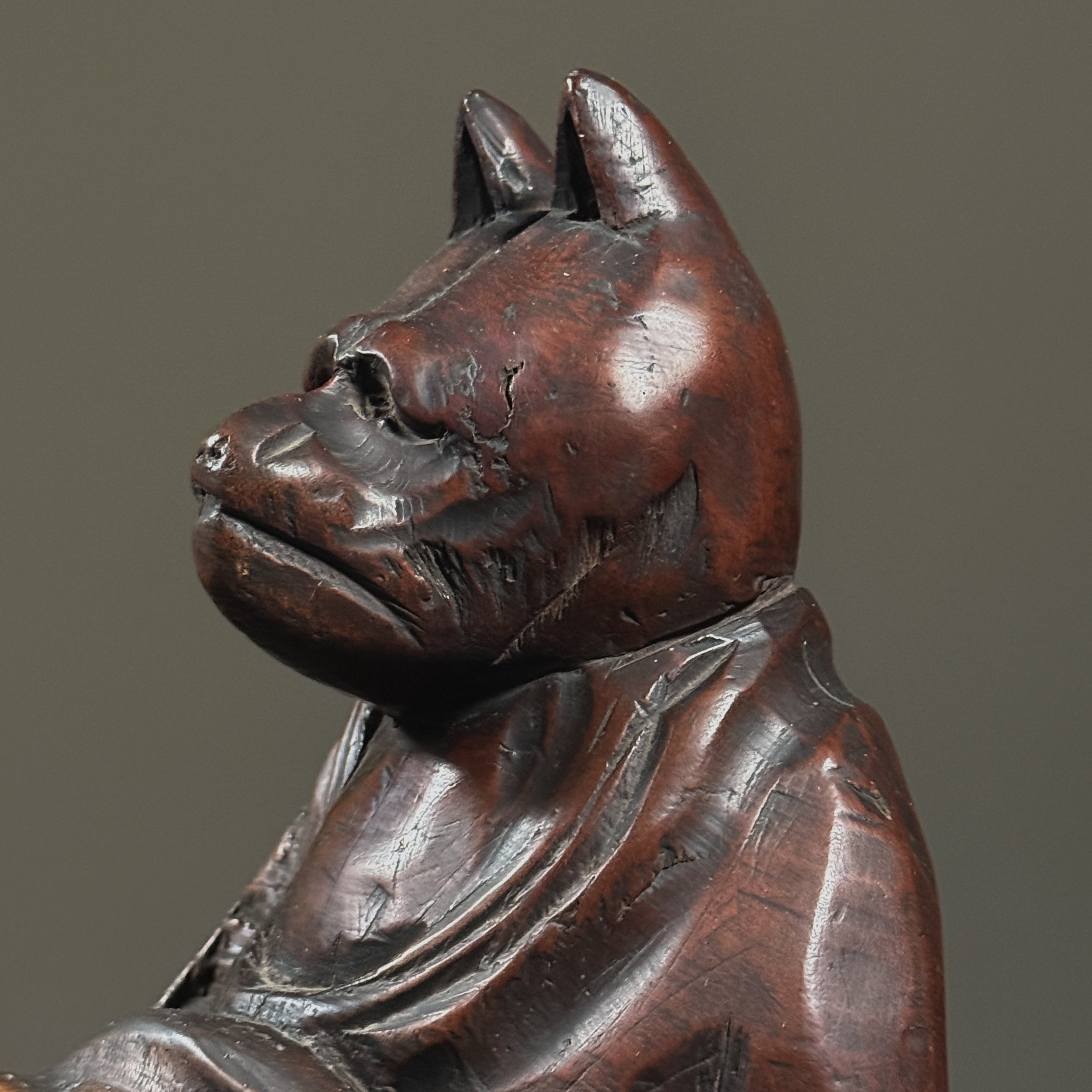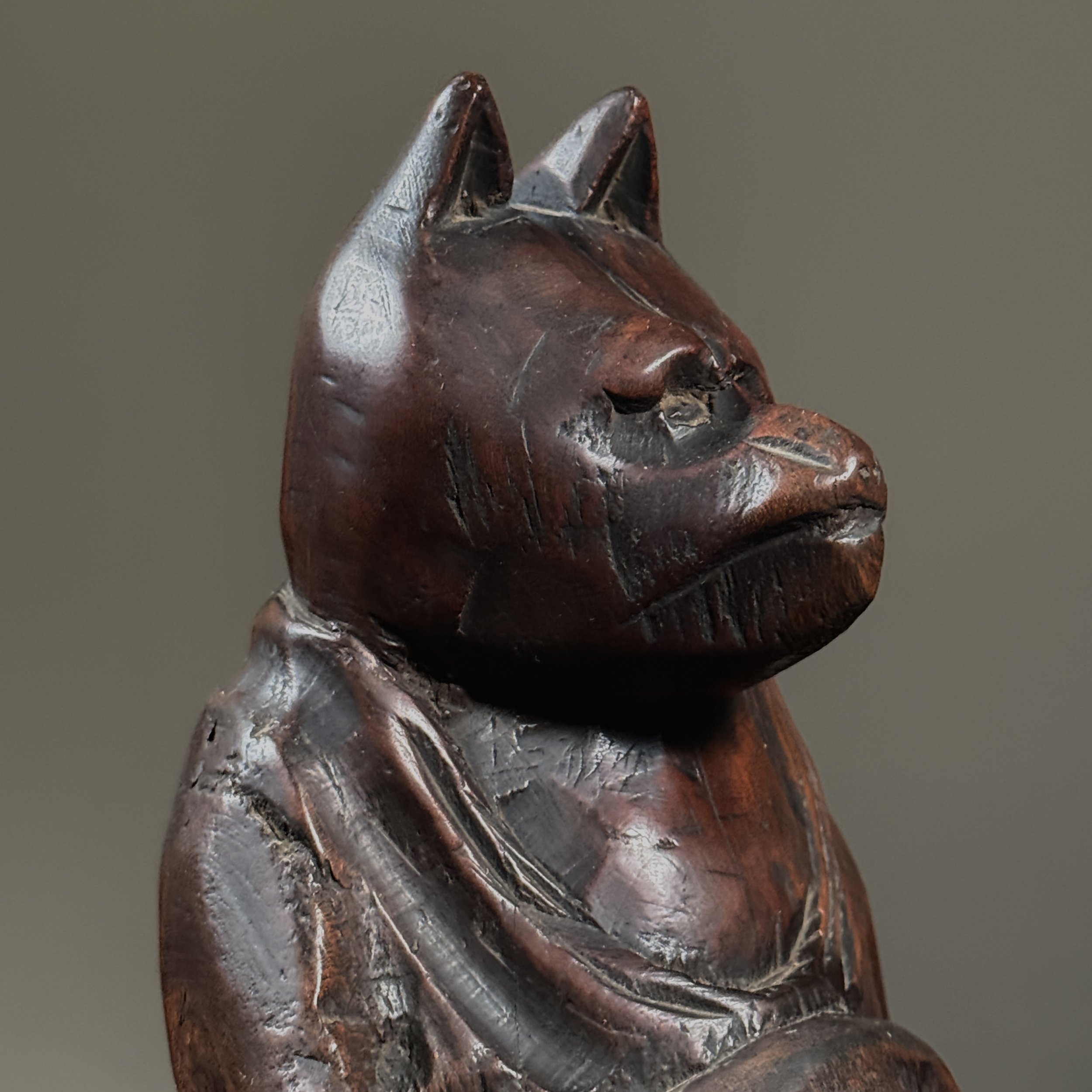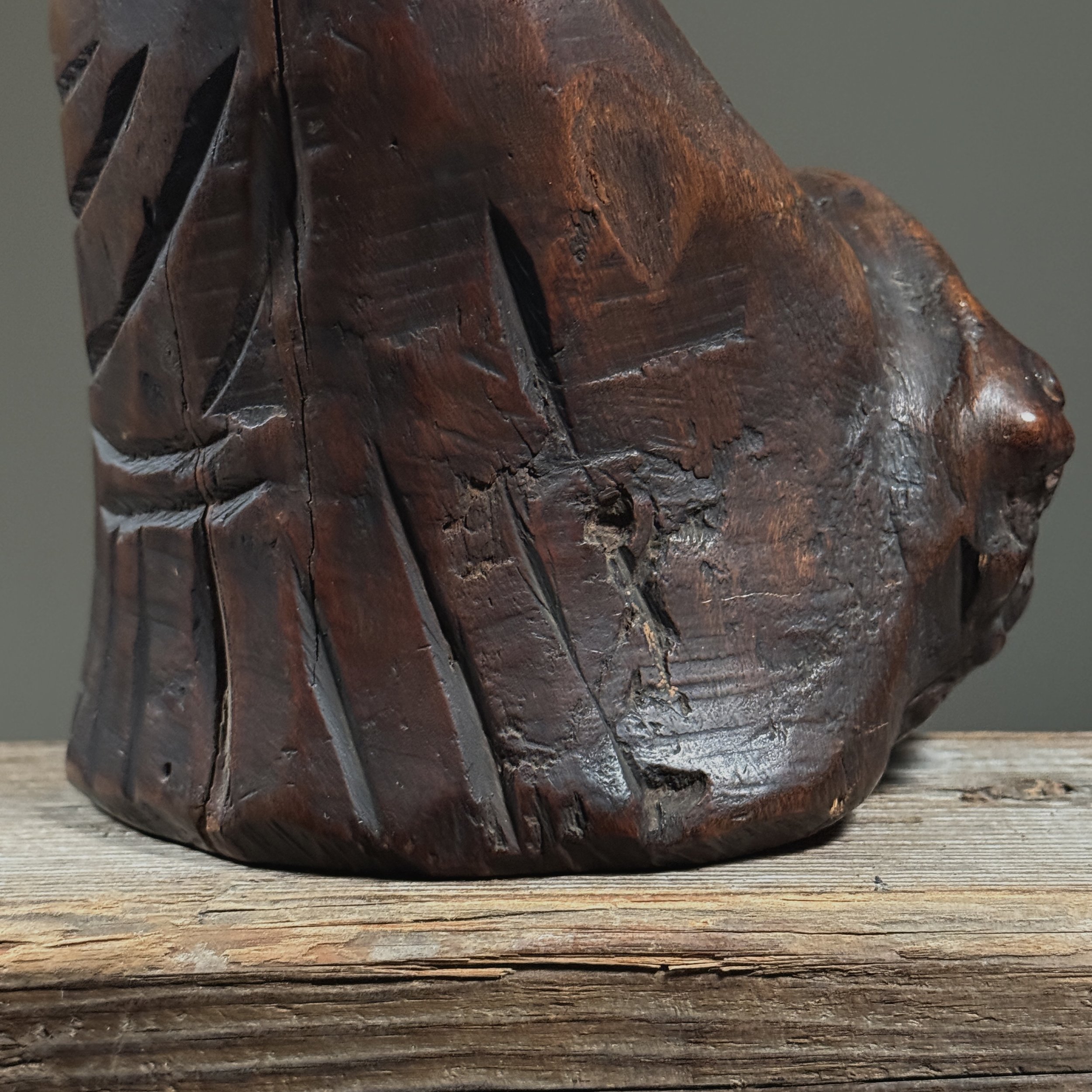 Image 1 of 11
Image 1 of 11

 Image 2 of 11
Image 2 of 11

 Image 3 of 11
Image 3 of 11

 Image 4 of 11
Image 4 of 11

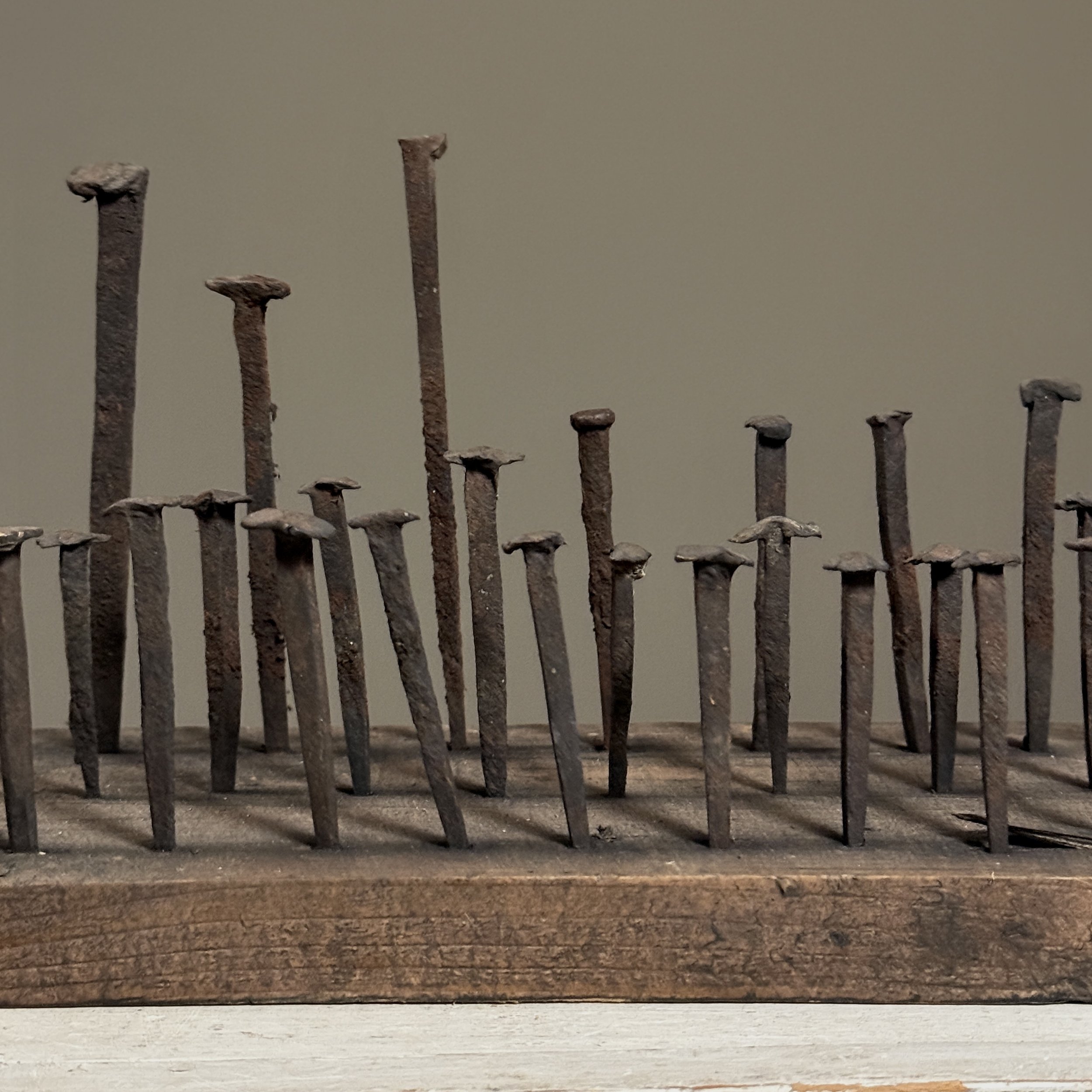 Image 5 of 11
Image 5 of 11

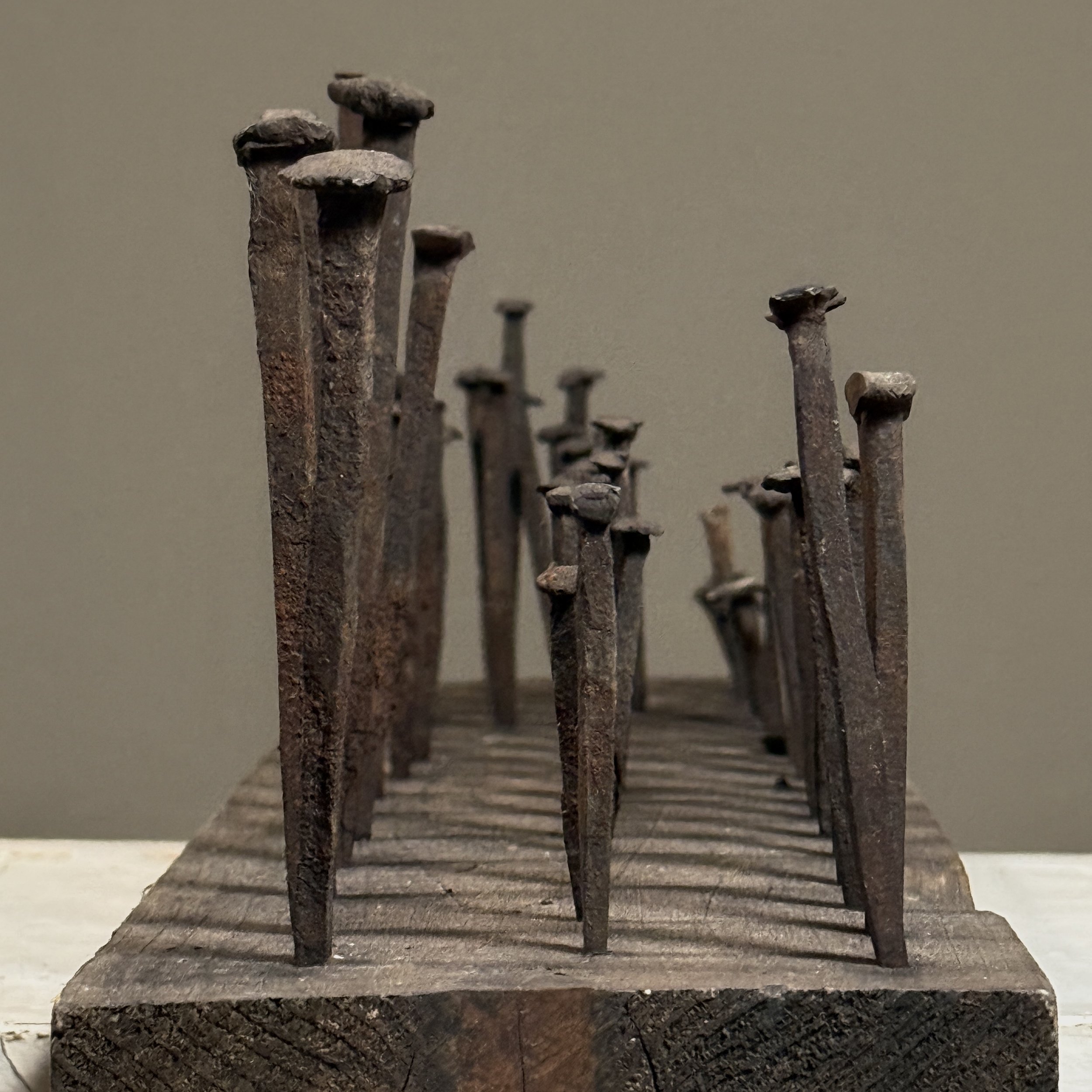 Image 6 of 11
Image 6 of 11

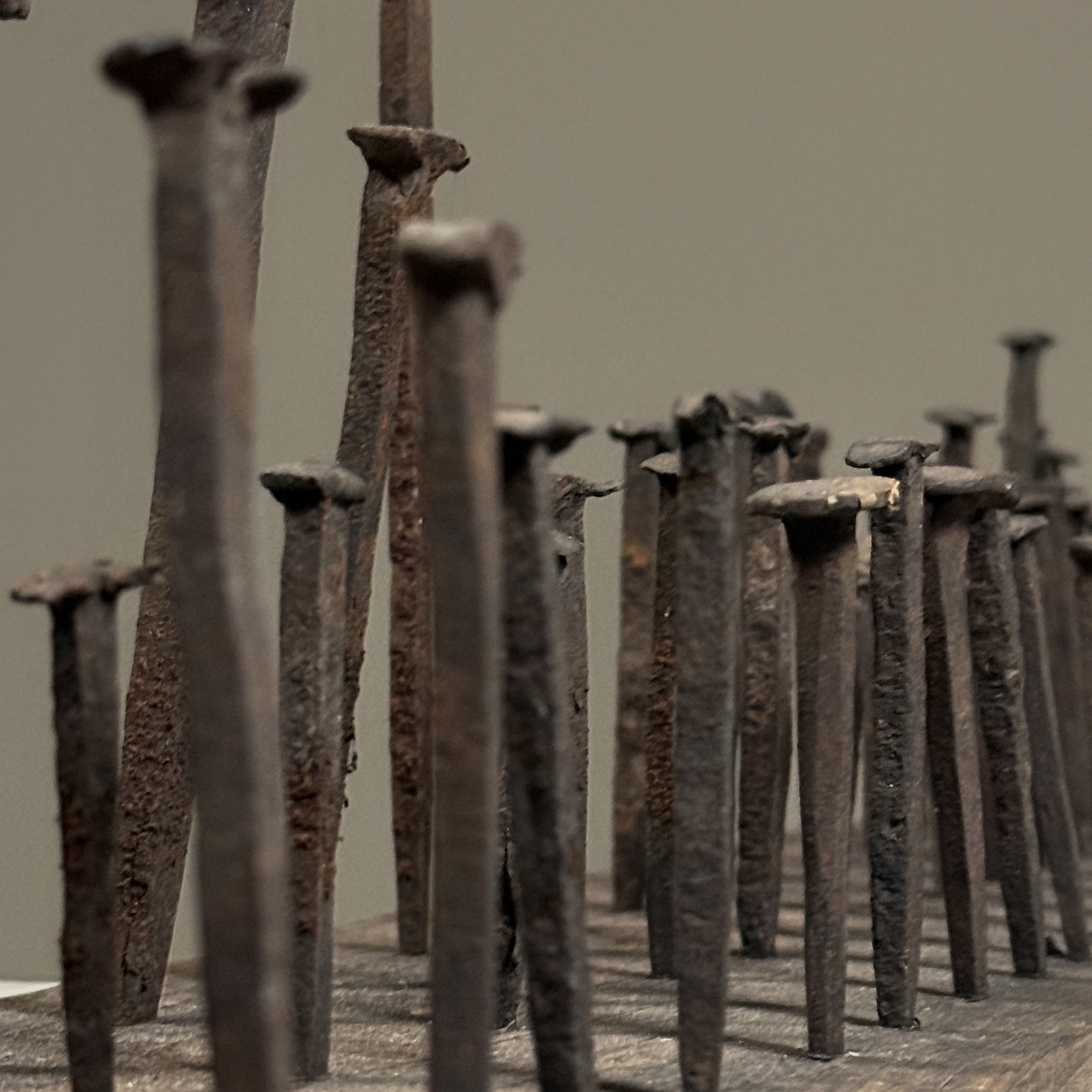 Image 7 of 11
Image 7 of 11

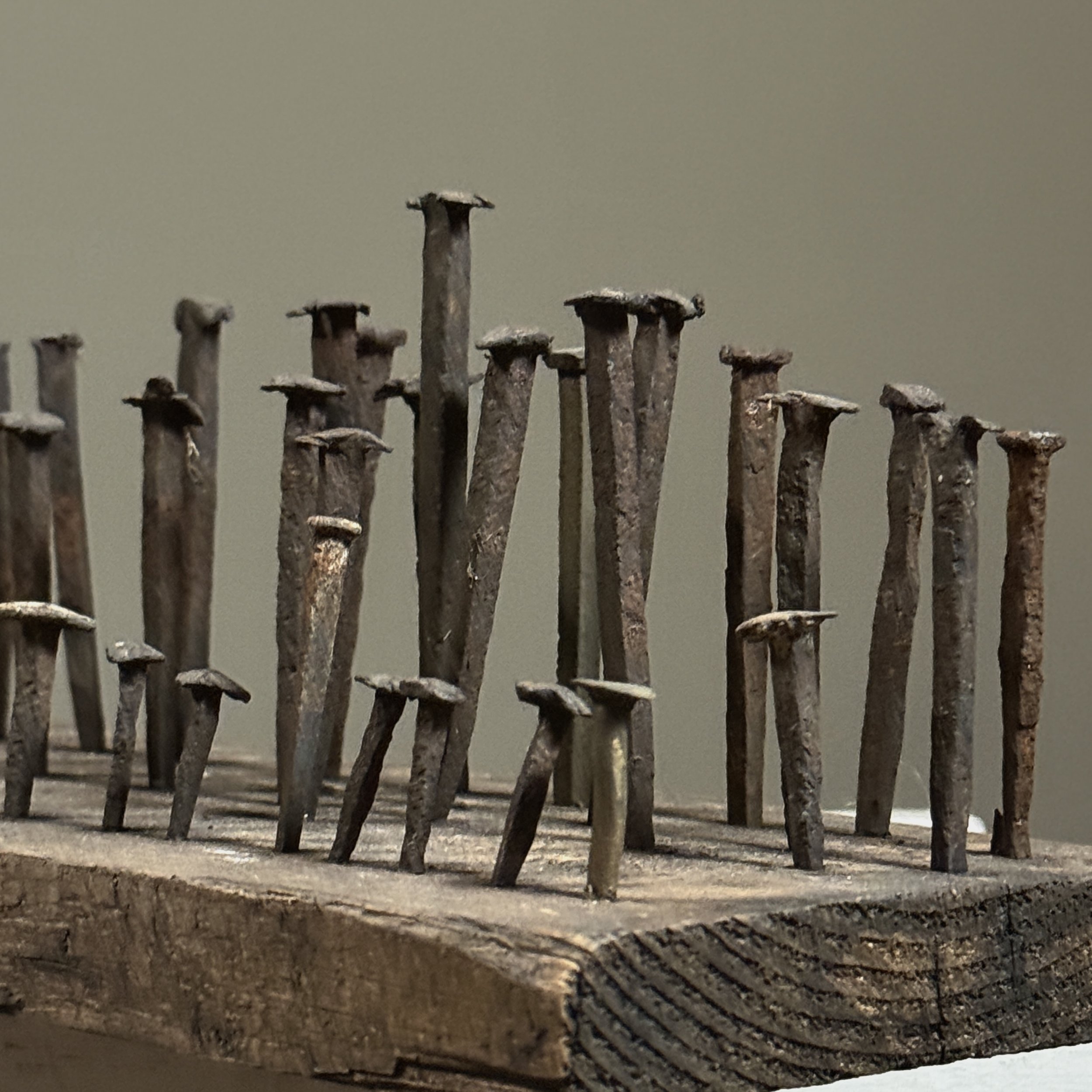 Image 8 of 11
Image 8 of 11

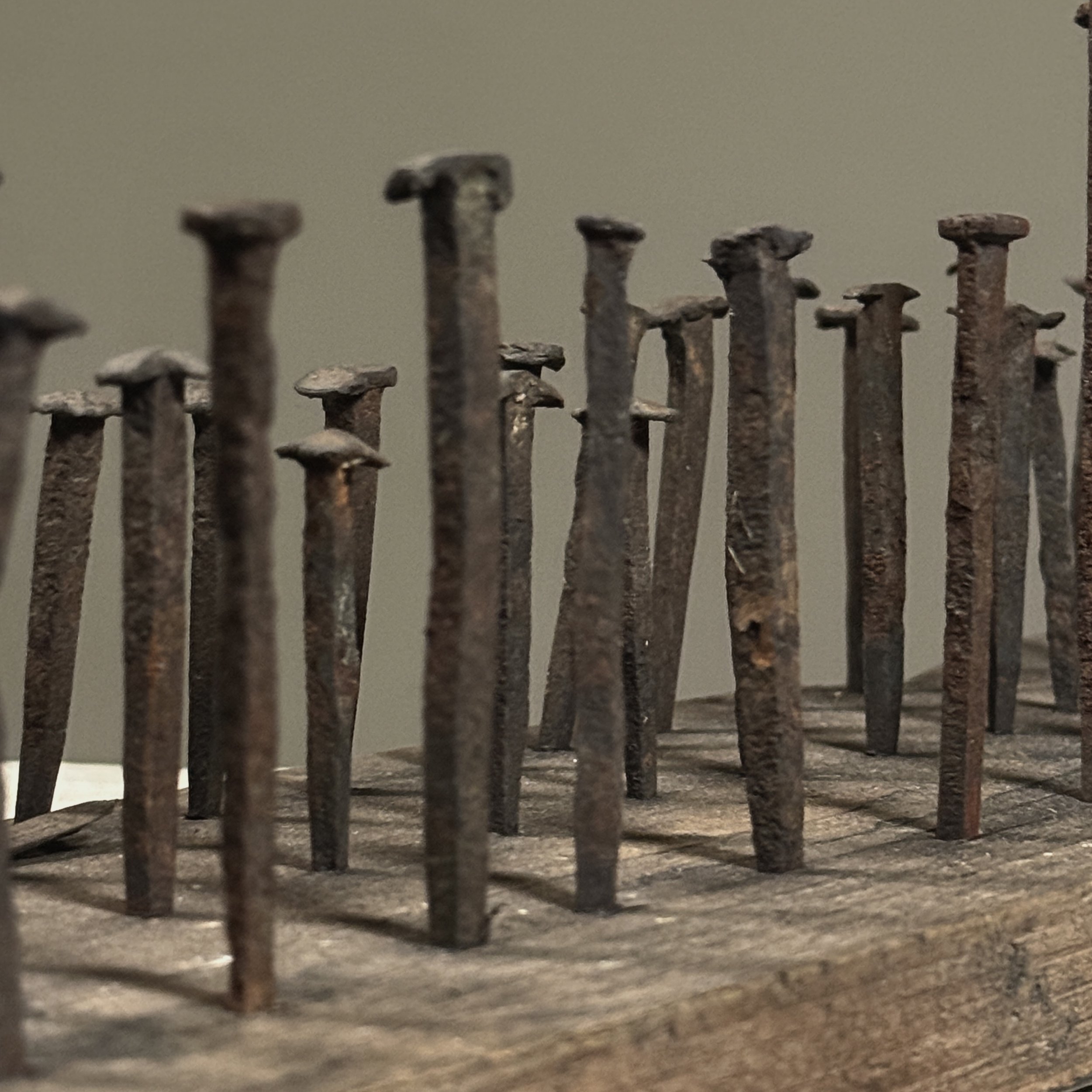 Image 9 of 11
Image 9 of 11

 Image 10 of 11
Image 10 of 11

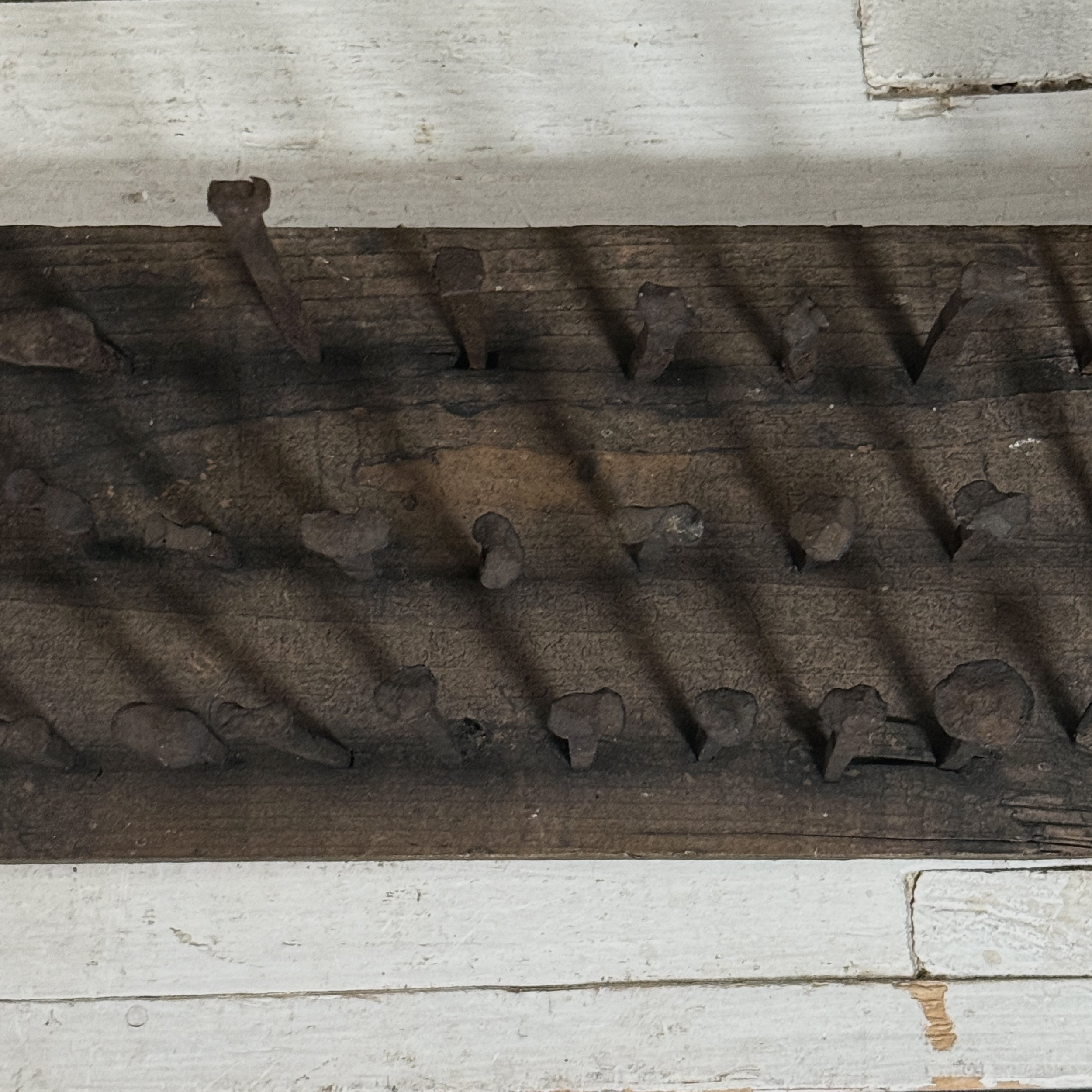 Image 11 of 11
Image 11 of 11












Antique Untitled Found Art Nail Assemblage (Outsider Art)
Untitled Nail Assemblage (Outsider Art)
19th/early 20th century
Hand-forged iron nails on weathered wood base
18.5 × 4.3 × 5.2 in (47 × 11 × 13 cm)
This enigmatic found-object composition consists of various-sized hand-forged iron nails permanently adhered to a heavily patinated wooden substrate. The work's origin remains ambiguous—possibly functioning as:
- An early merchant's nail display sample
- A spontaneously created outsider artwork
The nails exhibit a subtle size progression across the board, suggesting either intentional arrangement or practical reuse. Their irregular hammer marks and rusted surfaces document early blacksmithing techniques, while the wood's deep weathering reveals decades of environmental exposure.
Material Analysis:
- Nails: 19th-century square-cut type with hand-wrought heads
- Wood: Likely repurposed oak or chestnut beam
- Patina: Stable iron oxide layers with natural verdigris
Condition:
- Structurally sound metal-to-wood adhesion
- Heavy but stable patination throughout
- Surface wear consistent with age
Comparable vernacular ironwork can be found in the collections of the American Folk Art Museum (NYC) and Musée des Arts Brut (Lausanne).
Untitled Nail Assemblage (Outsider Art)
19th/early 20th century
Hand-forged iron nails on weathered wood base
18.5 × 4.3 × 5.2 in (47 × 11 × 13 cm)
This enigmatic found-object composition consists of various-sized hand-forged iron nails permanently adhered to a heavily patinated wooden substrate. The work's origin remains ambiguous—possibly functioning as:
- An early merchant's nail display sample
- A spontaneously created outsider artwork
The nails exhibit a subtle size progression across the board, suggesting either intentional arrangement or practical reuse. Their irregular hammer marks and rusted surfaces document early blacksmithing techniques, while the wood's deep weathering reveals decades of environmental exposure.
Material Analysis:
- Nails: 19th-century square-cut type with hand-wrought heads
- Wood: Likely repurposed oak or chestnut beam
- Patina: Stable iron oxide layers with natural verdigris
Condition:
- Structurally sound metal-to-wood adhesion
- Heavy but stable patination throughout
- Surface wear consistent with age
Comparable vernacular ironwork can be found in the collections of the American Folk Art Museum (NYC) and Musée des Arts Brut (Lausanne).

